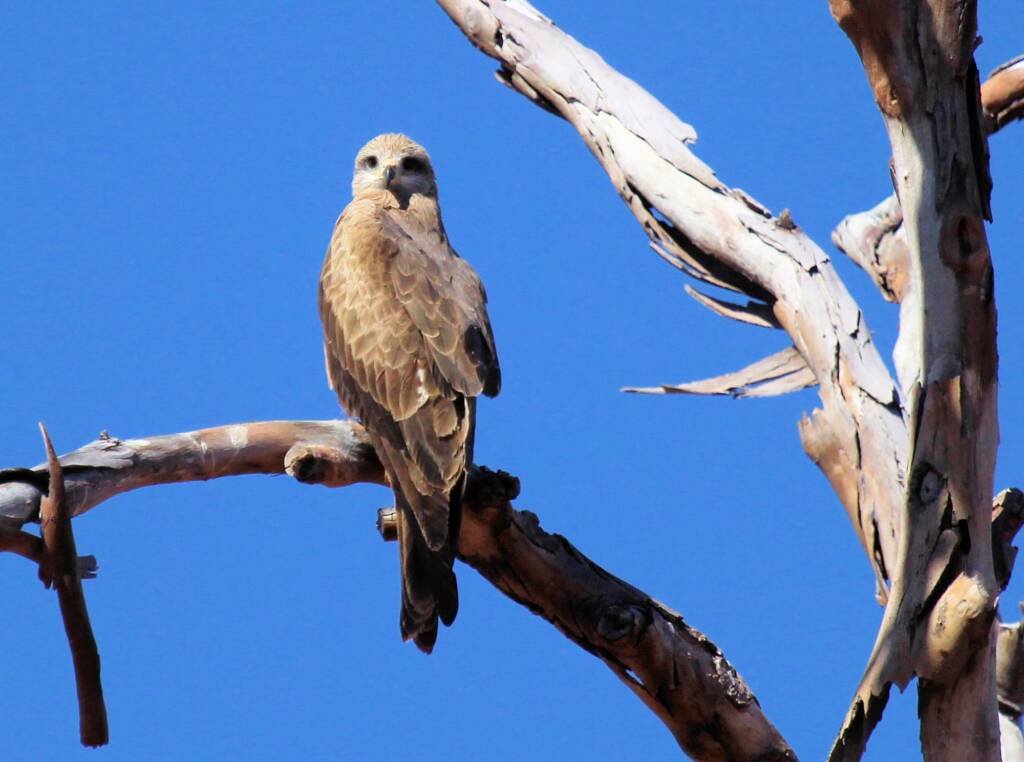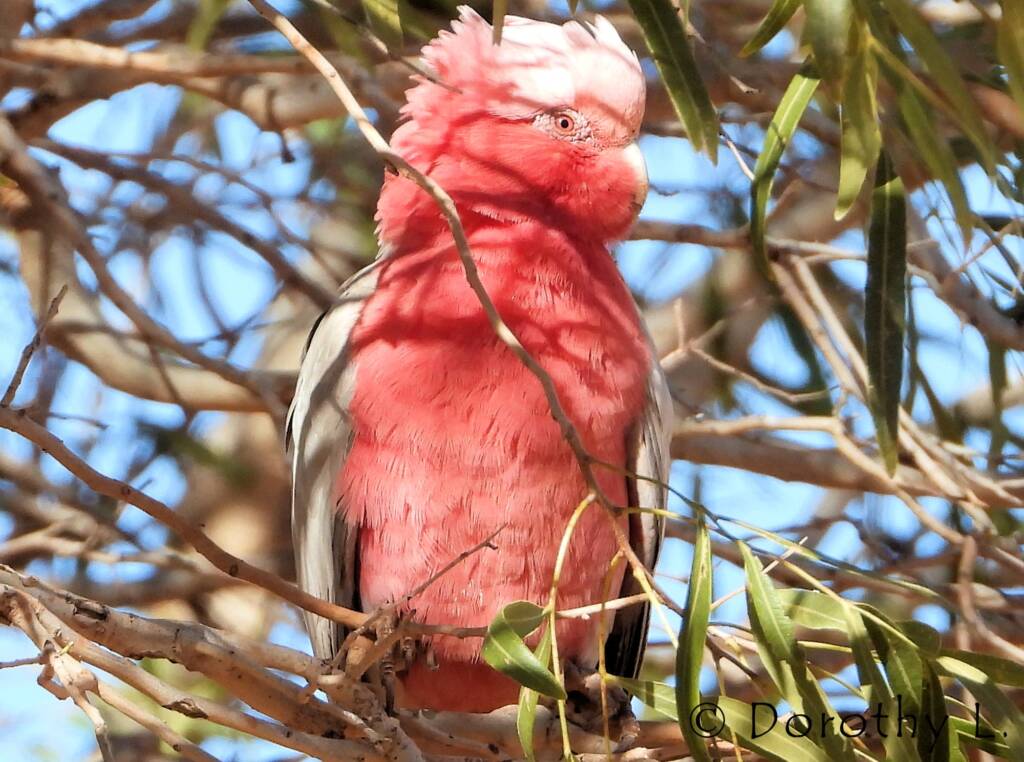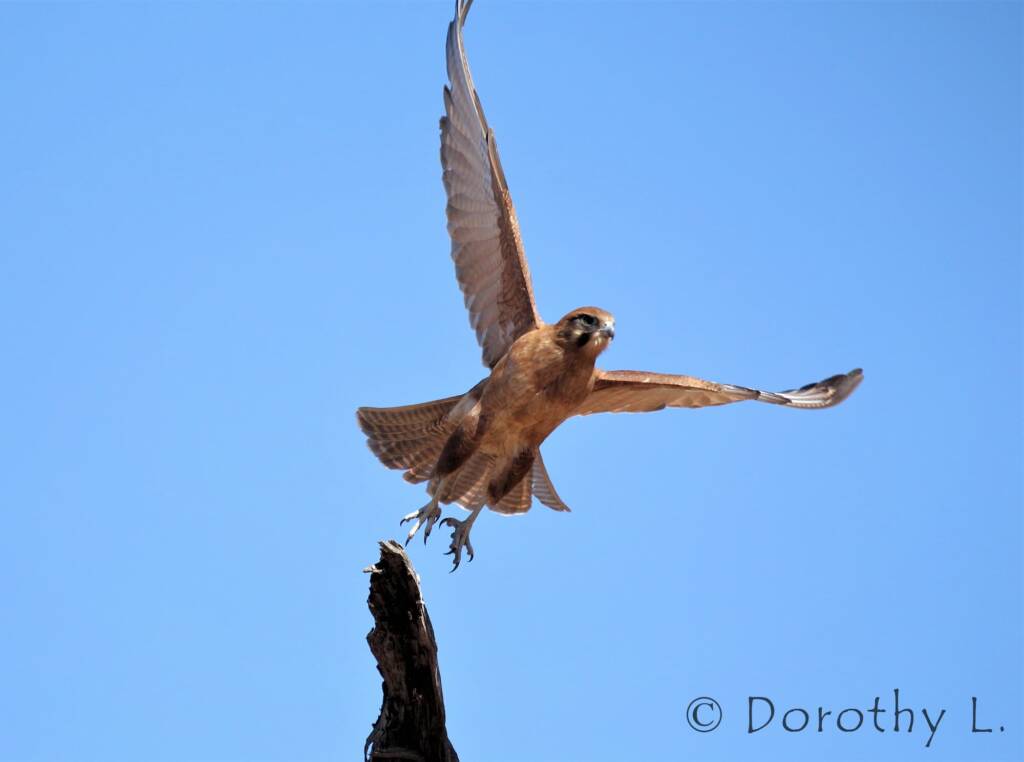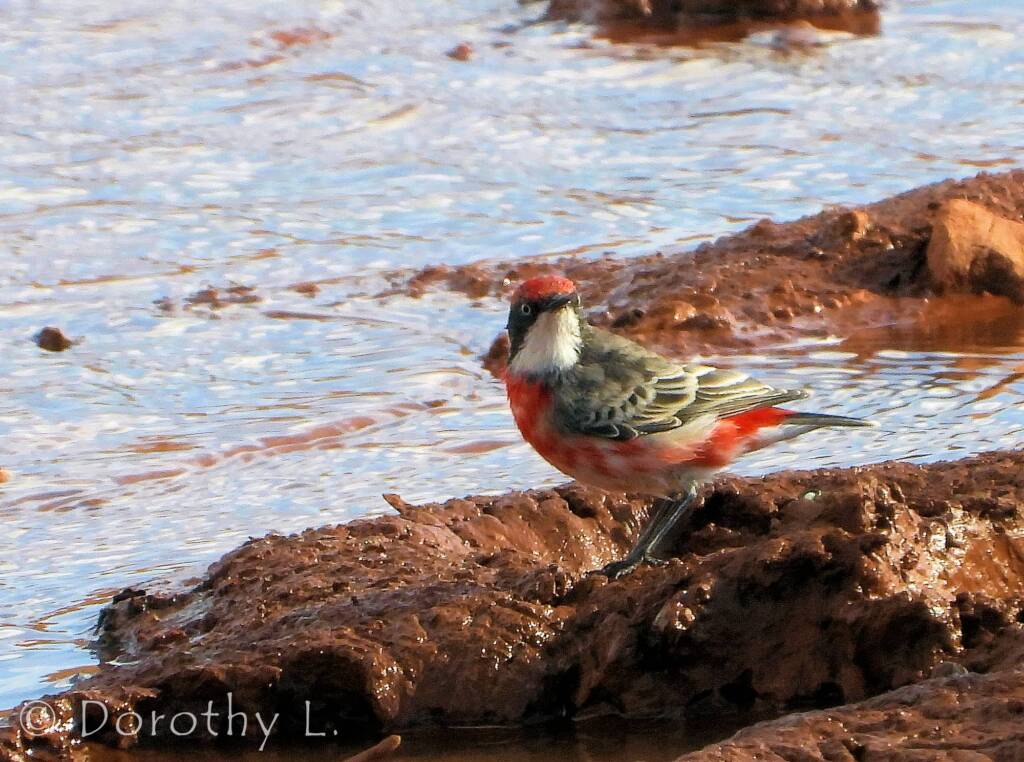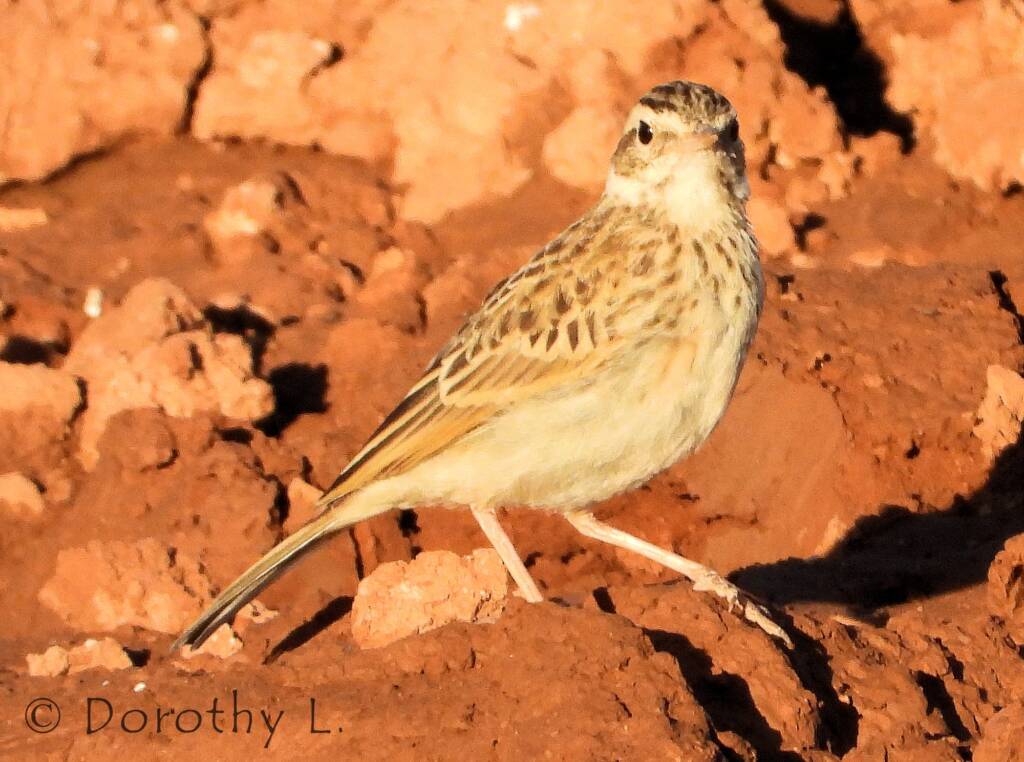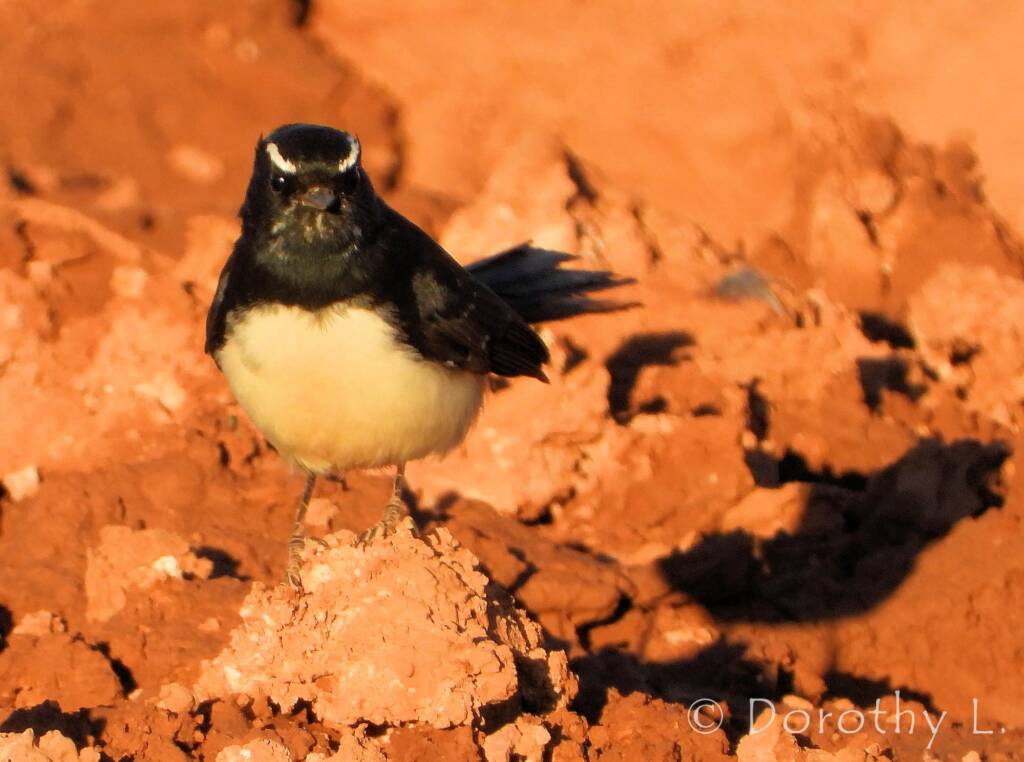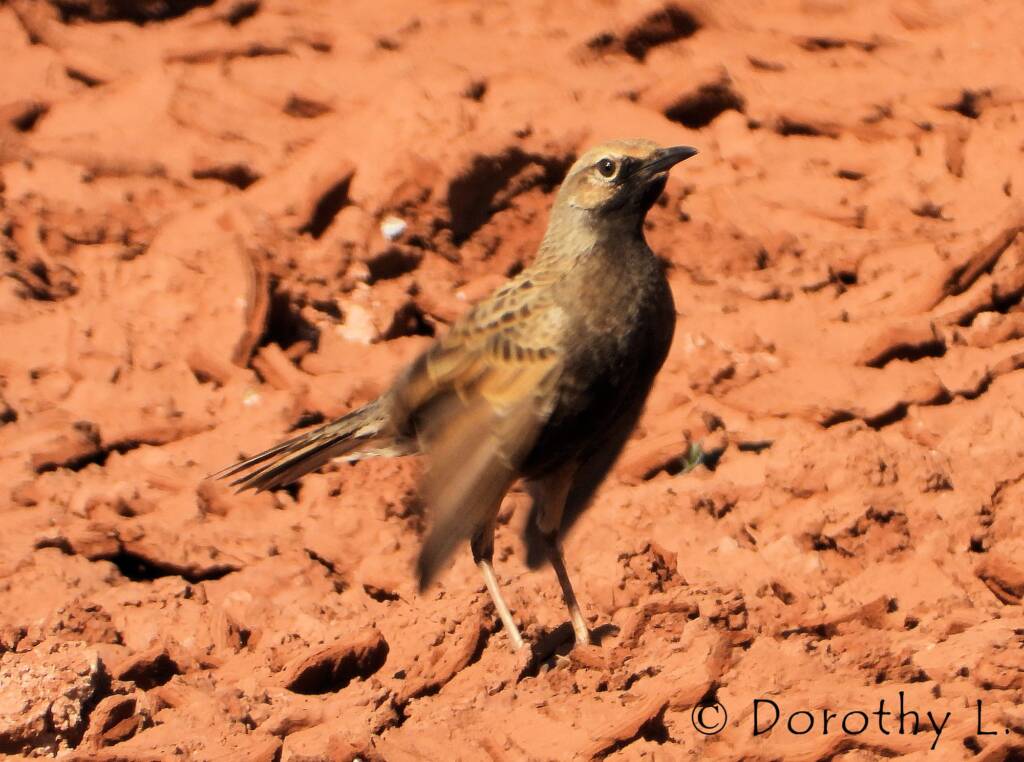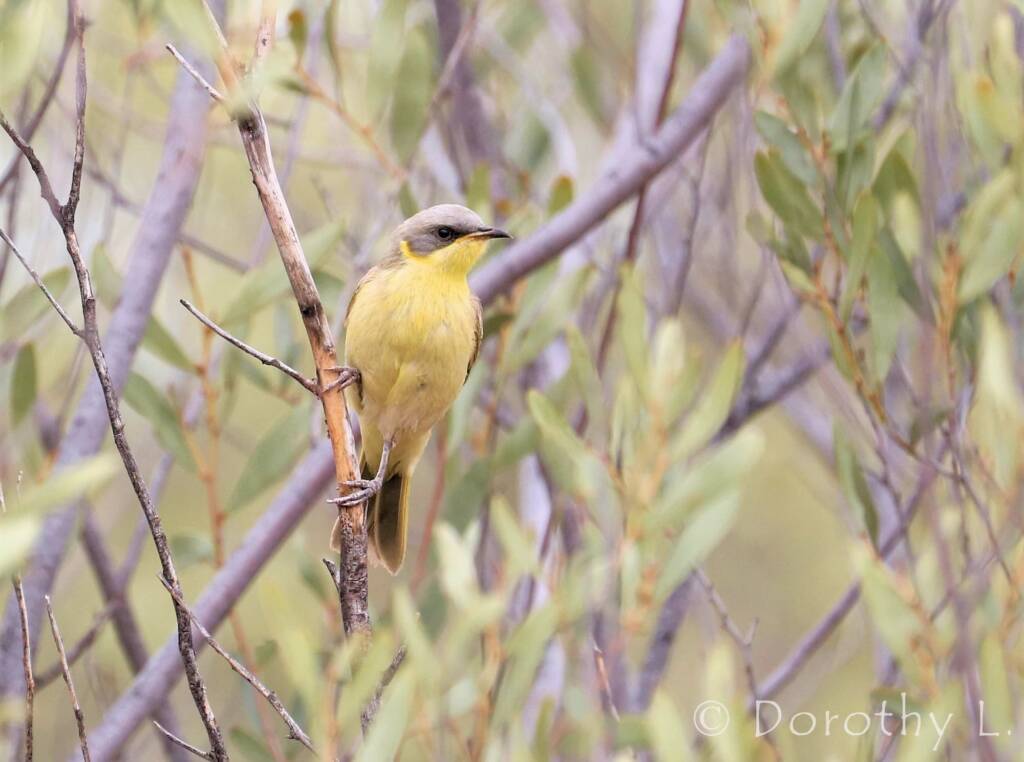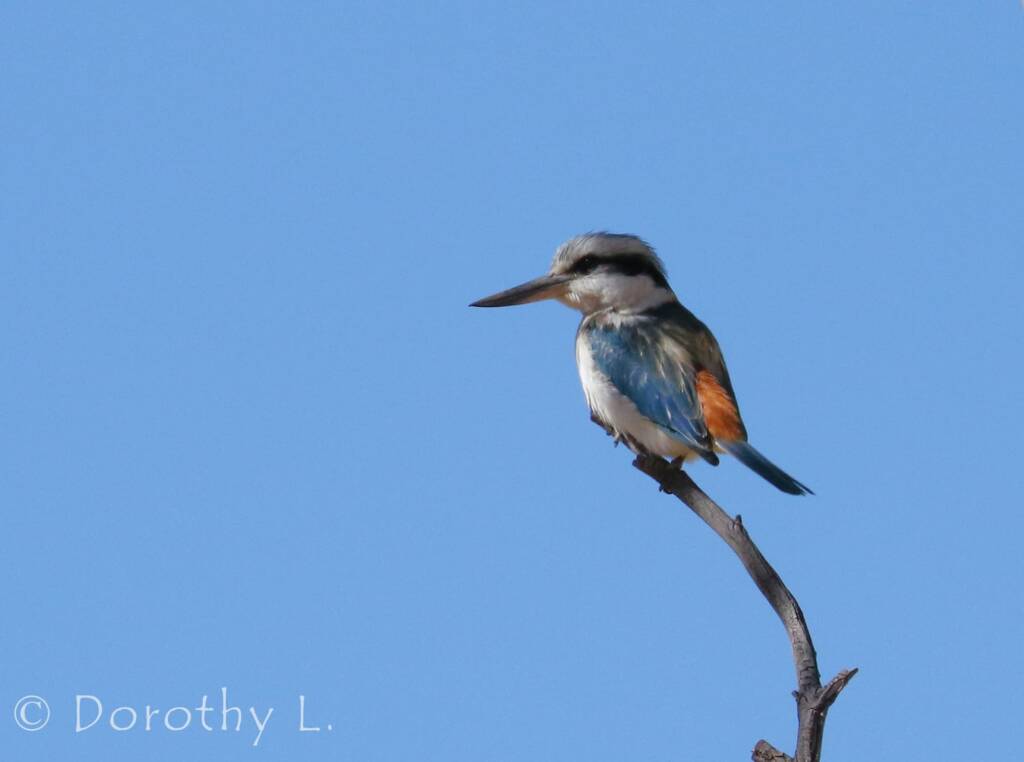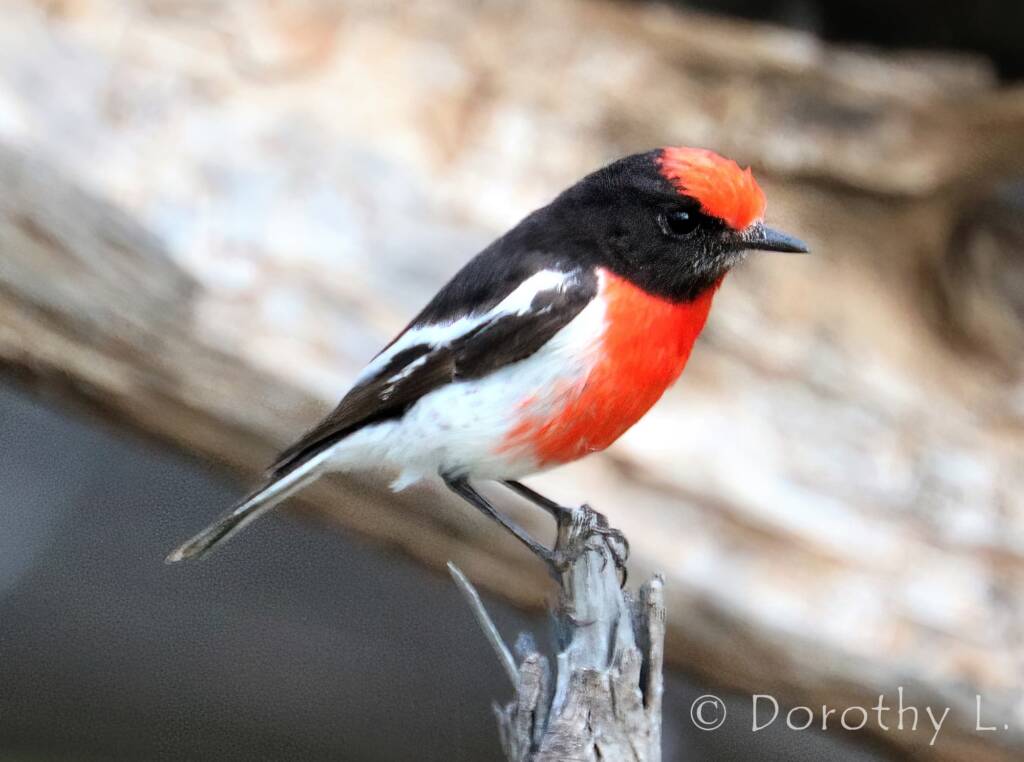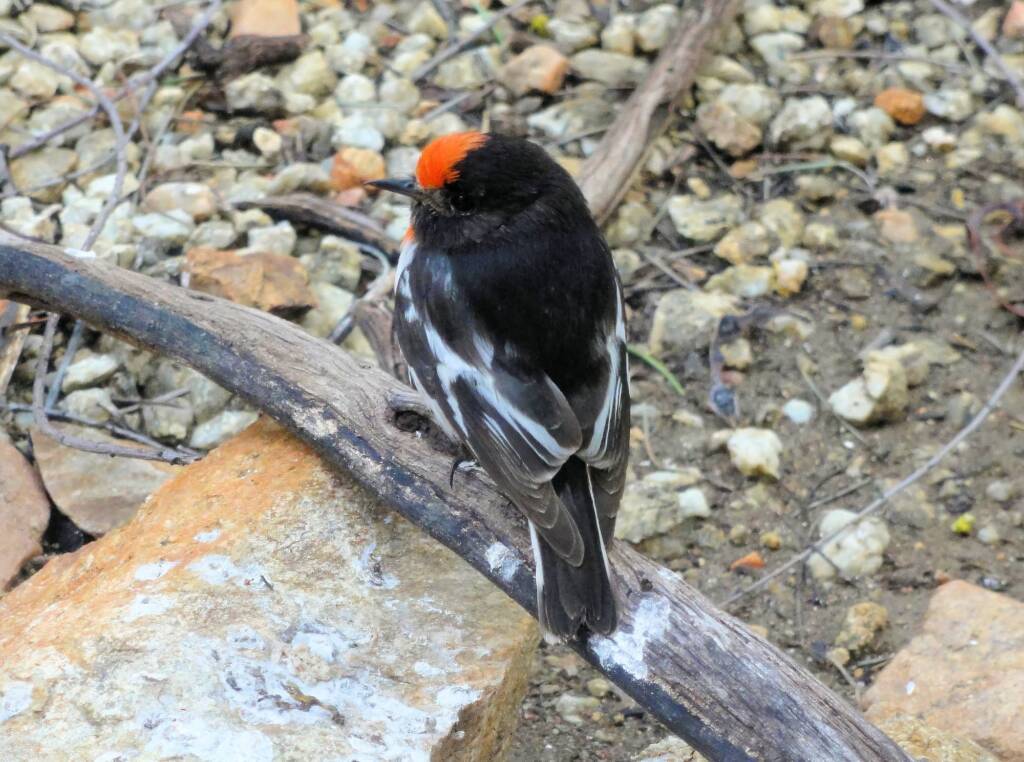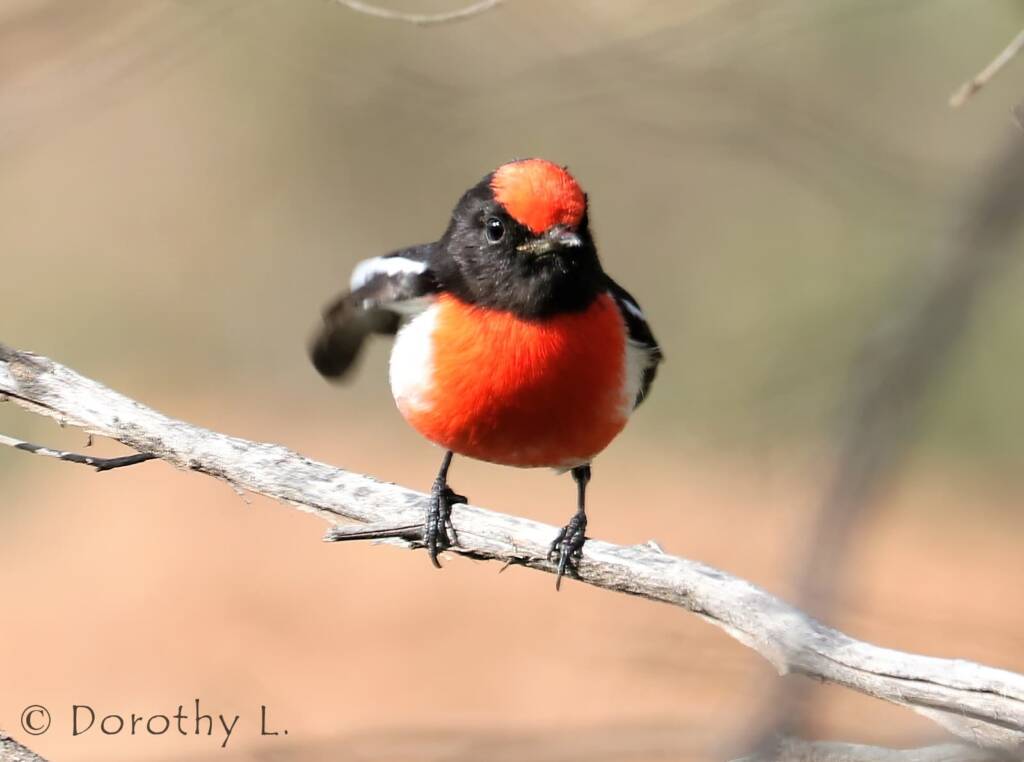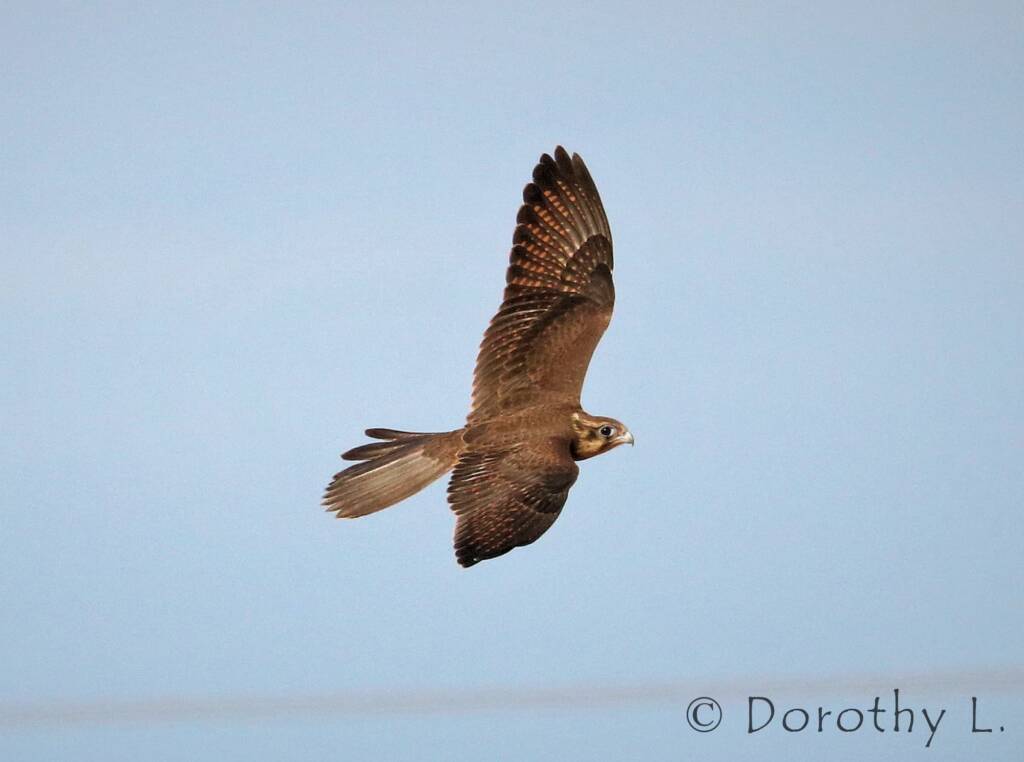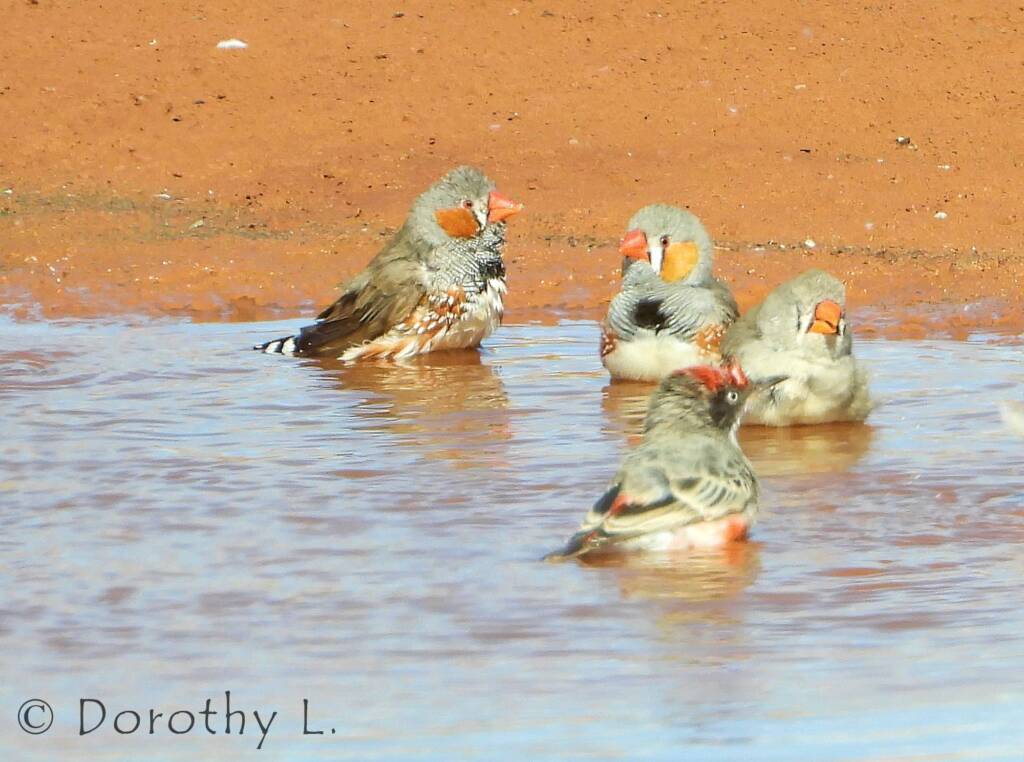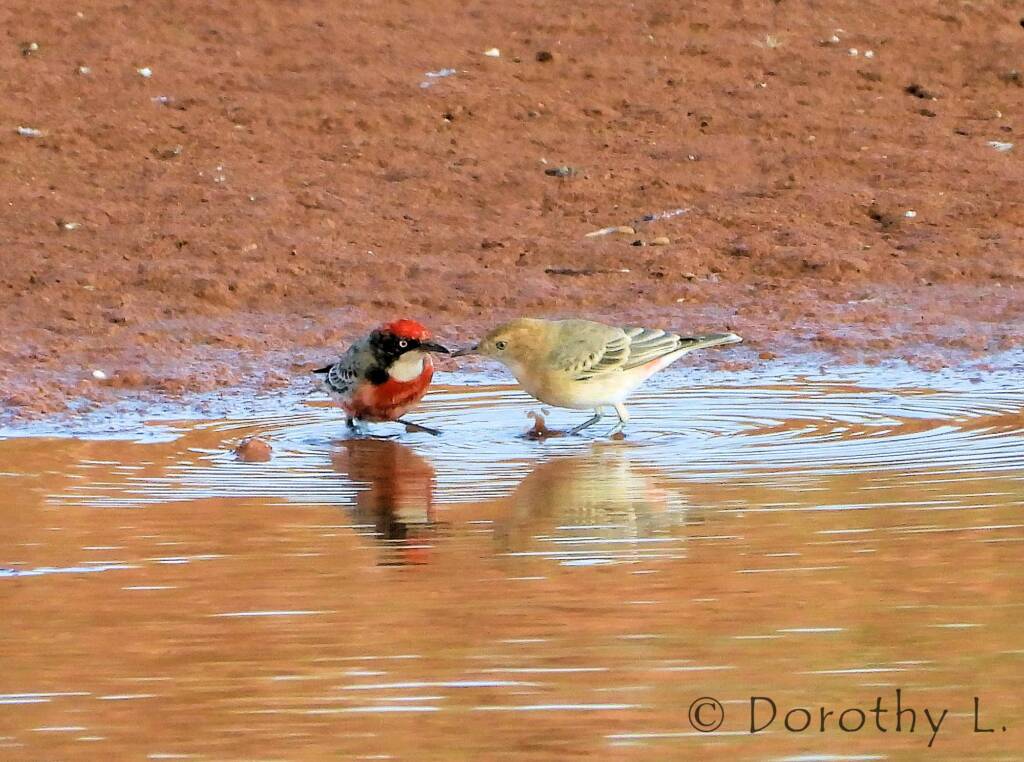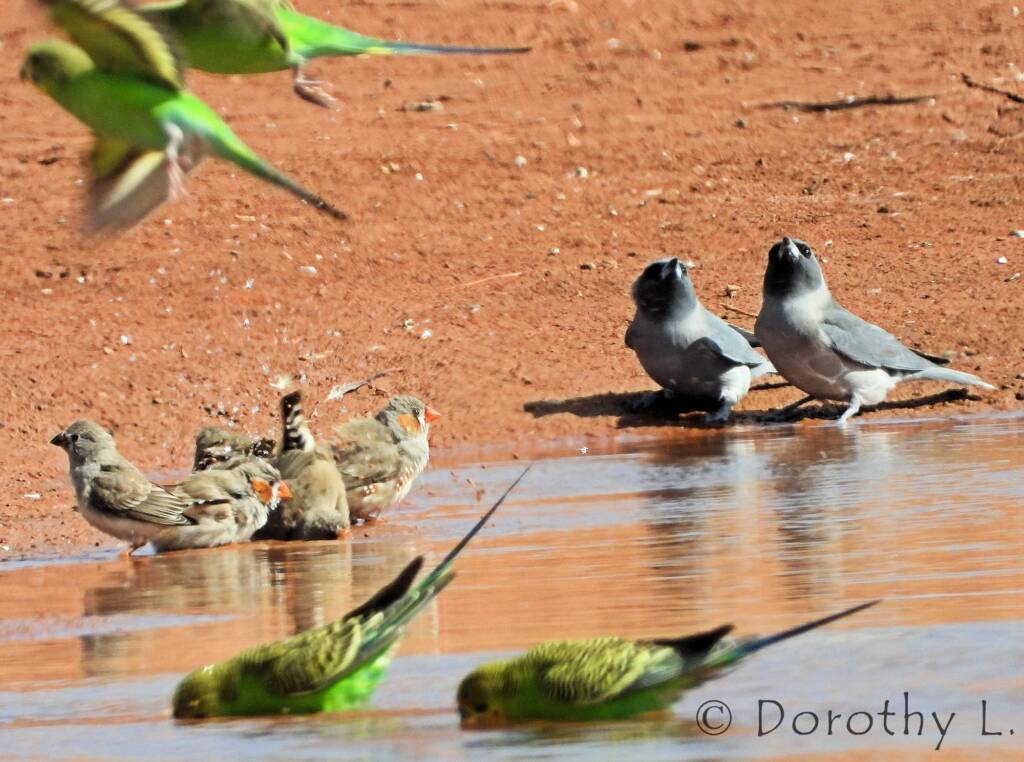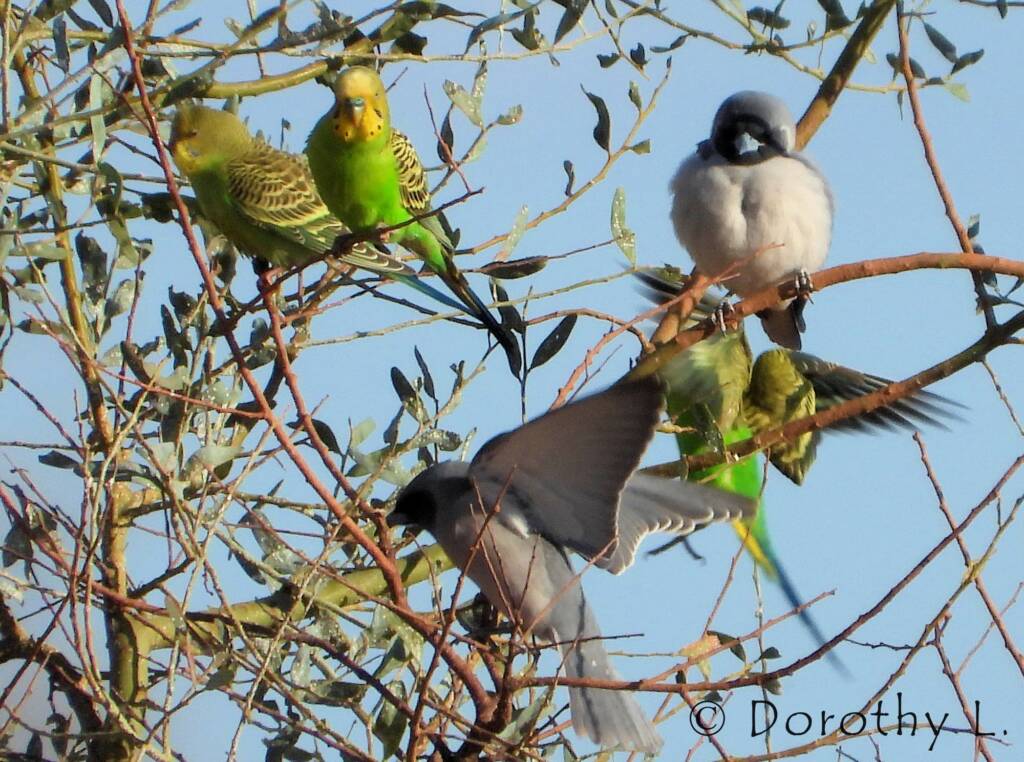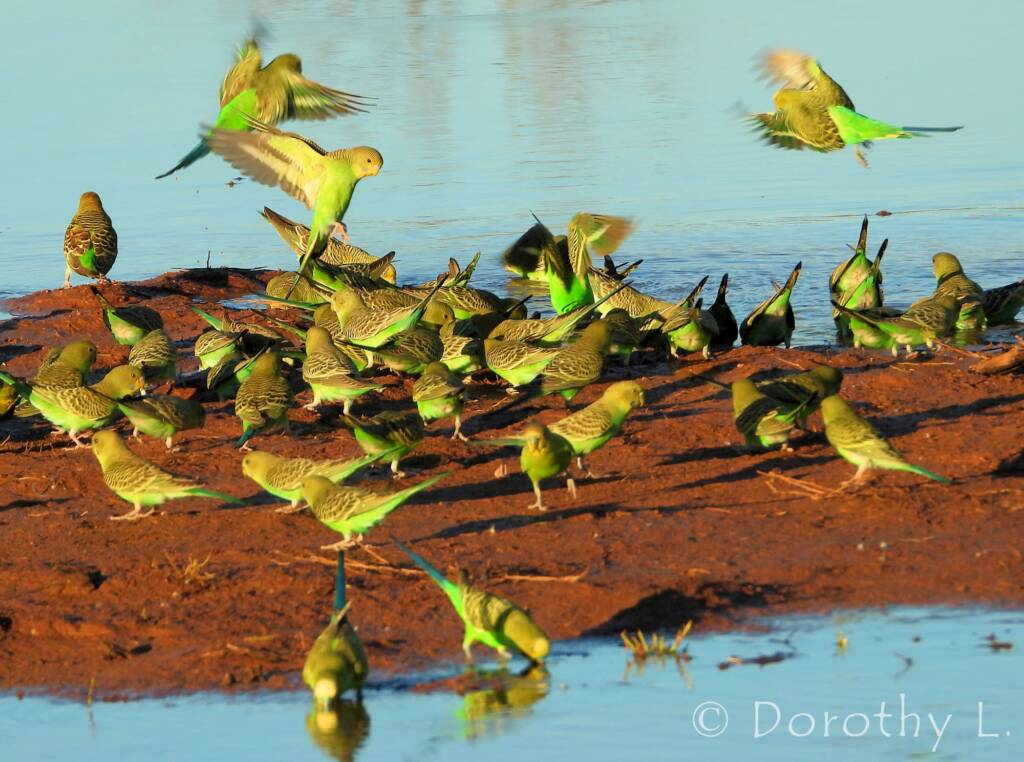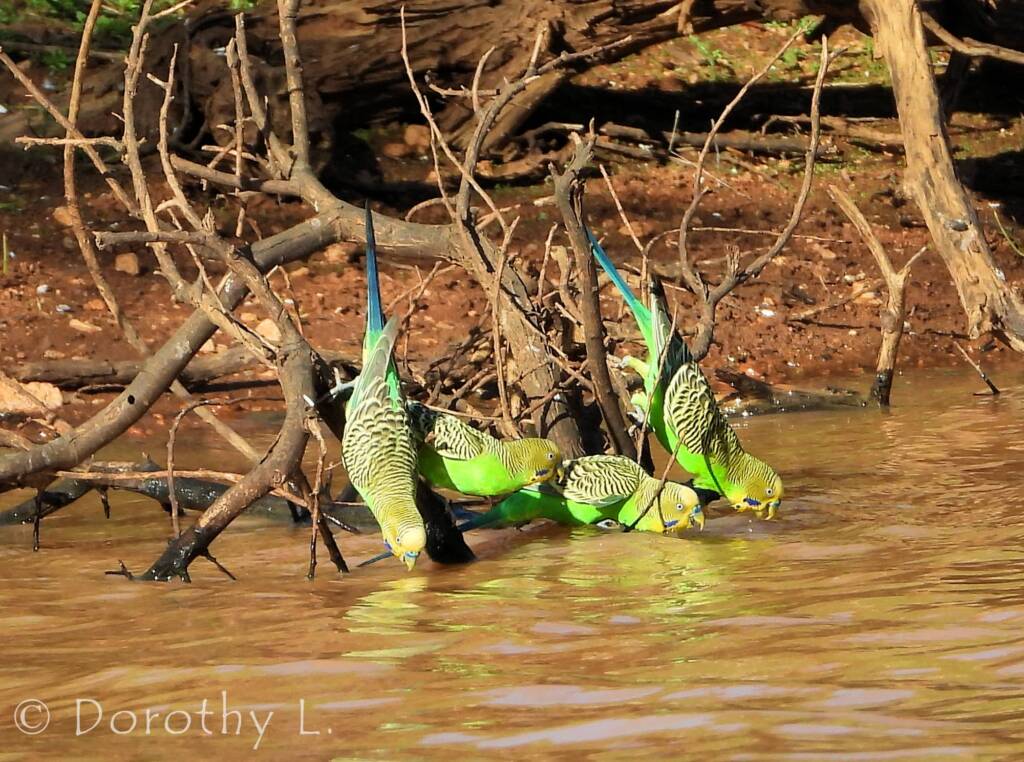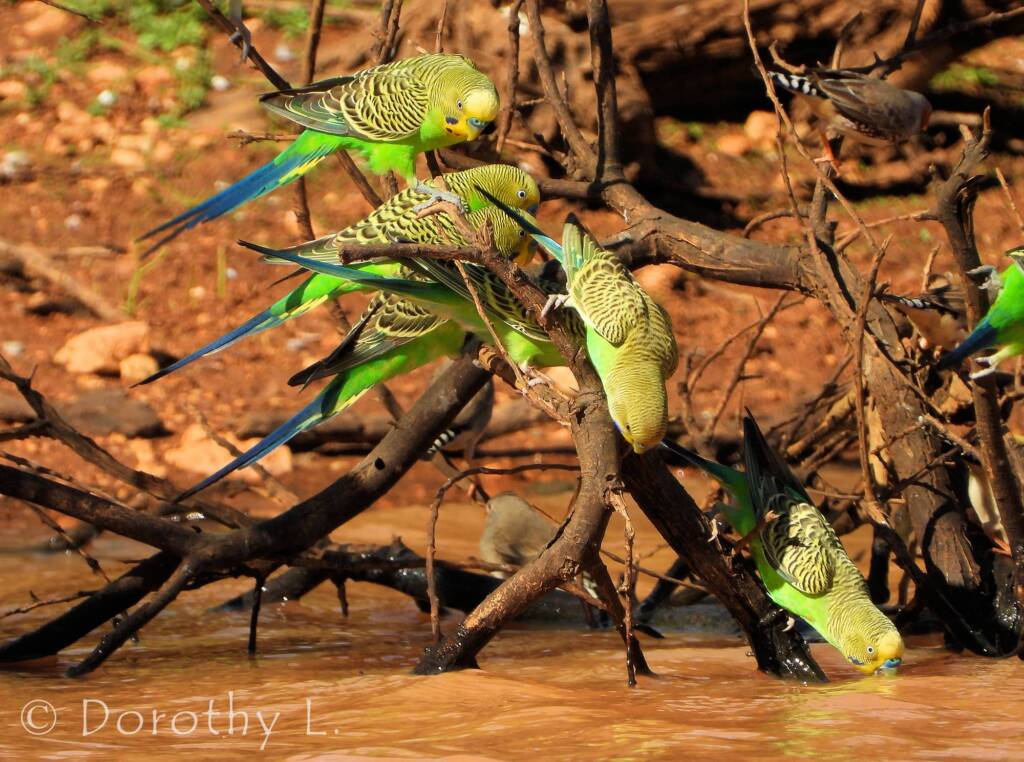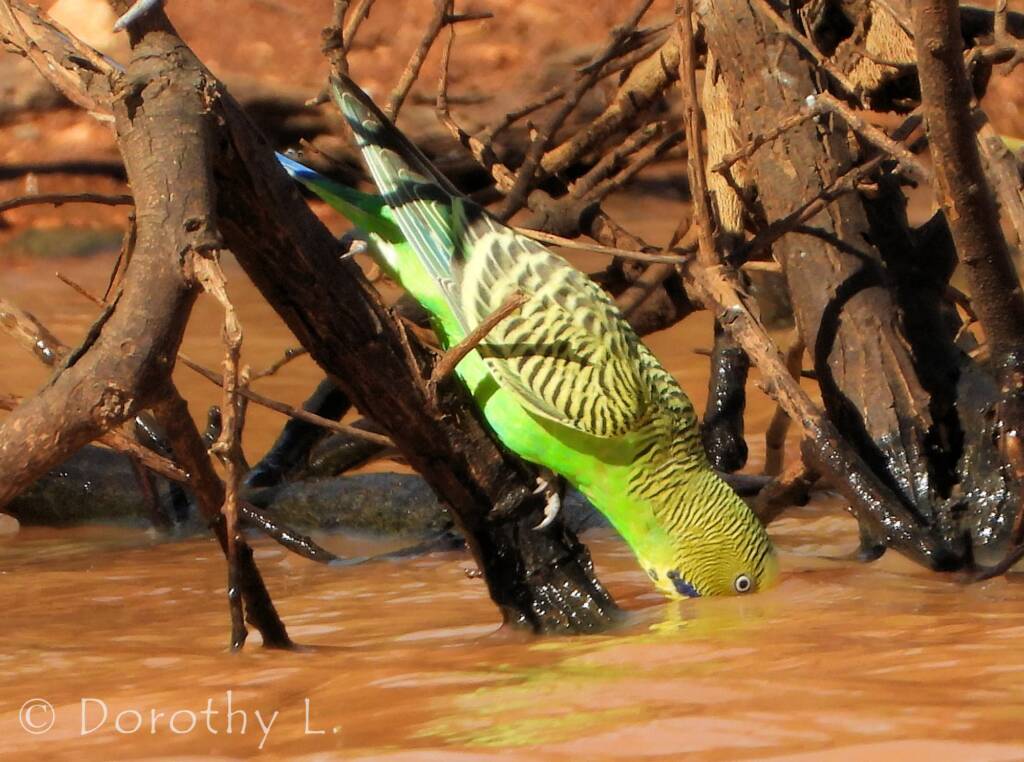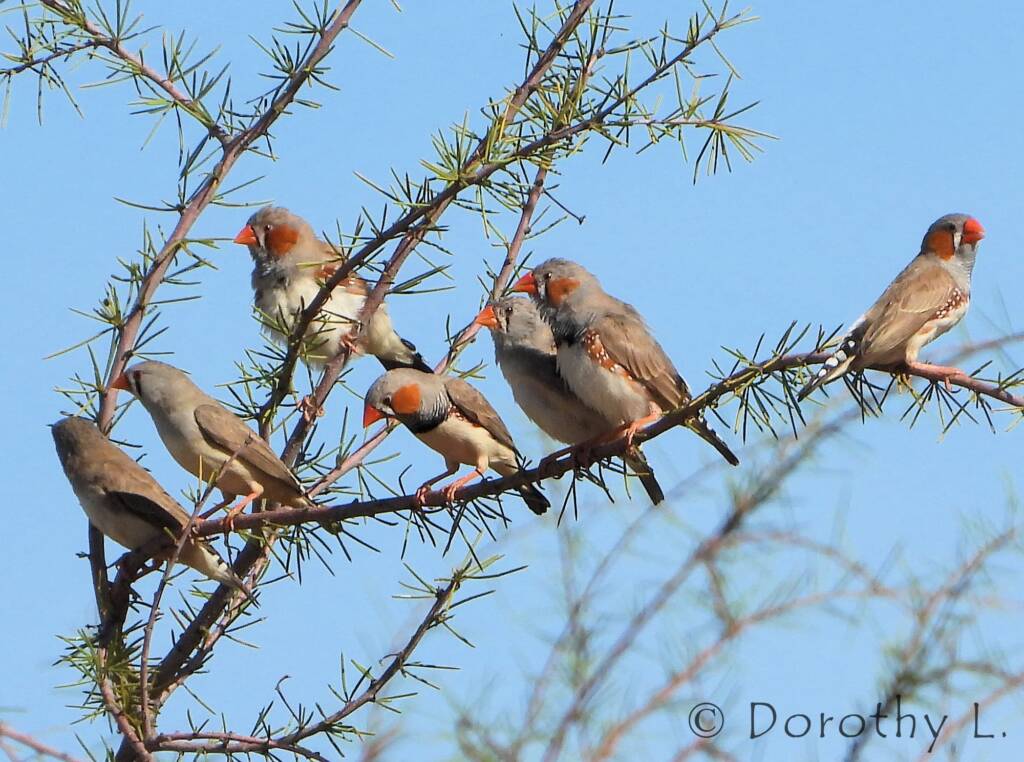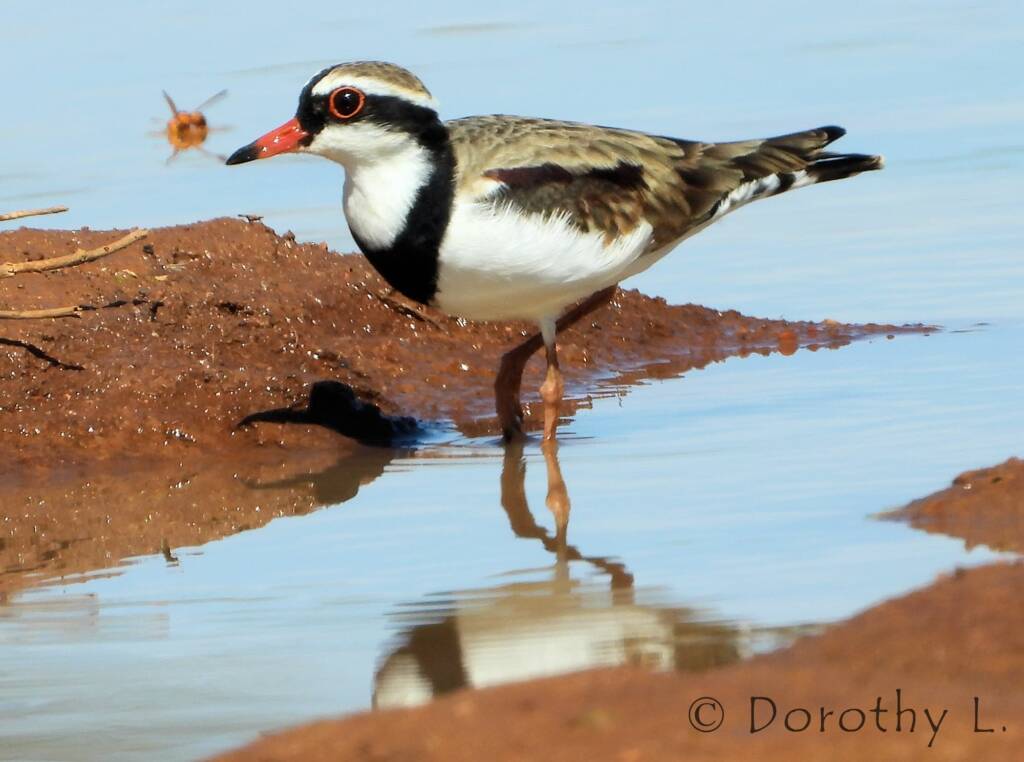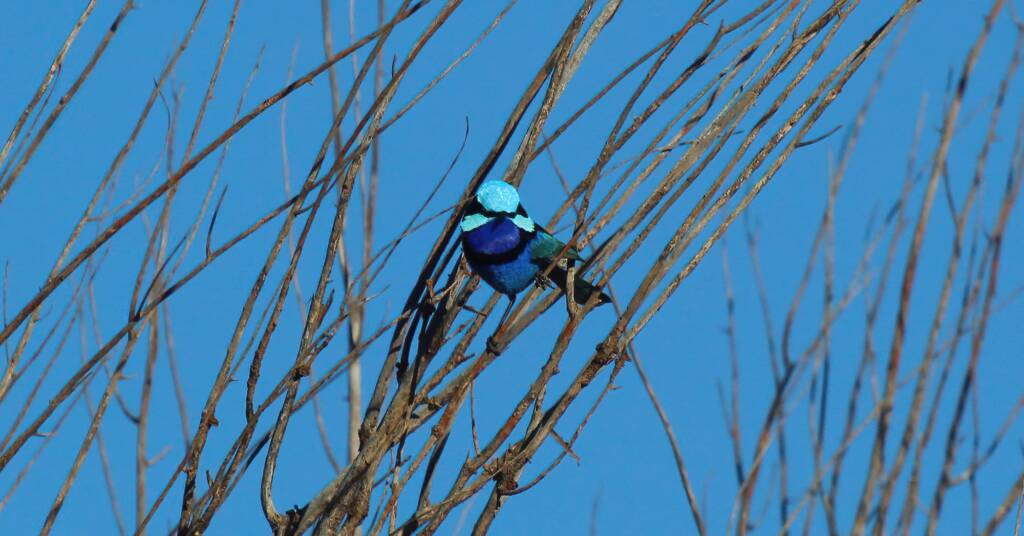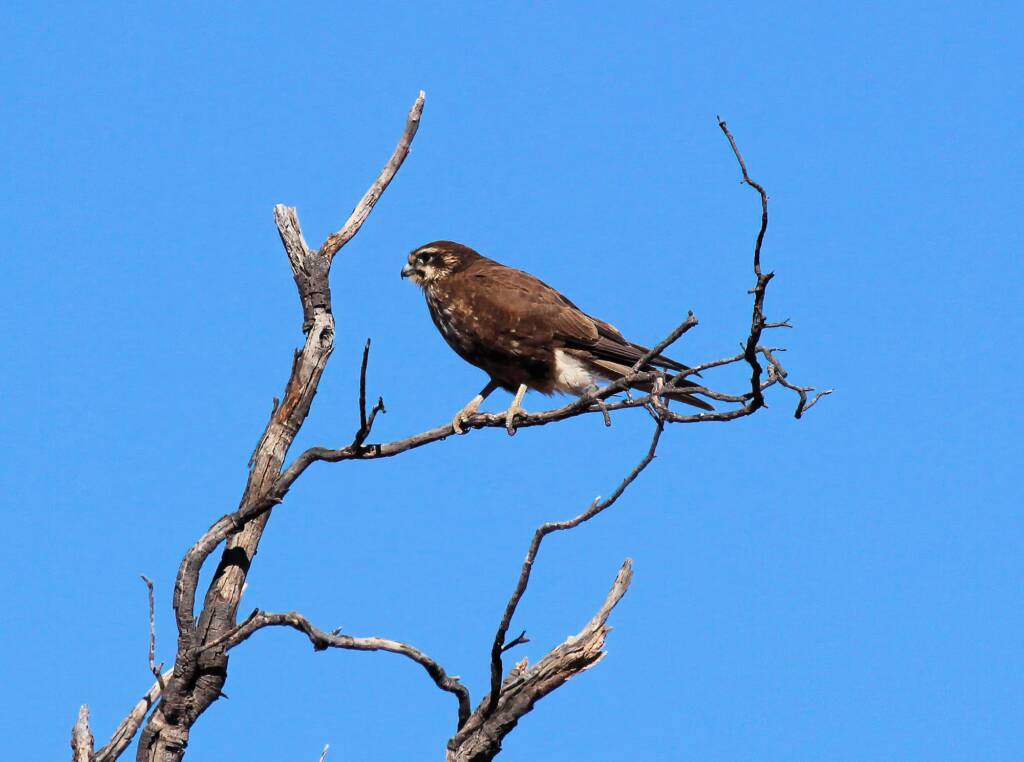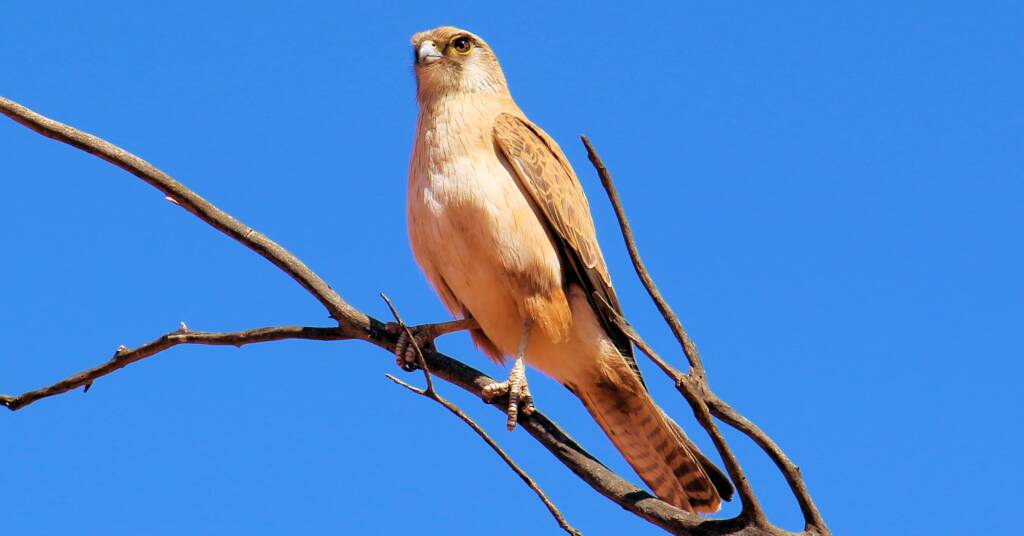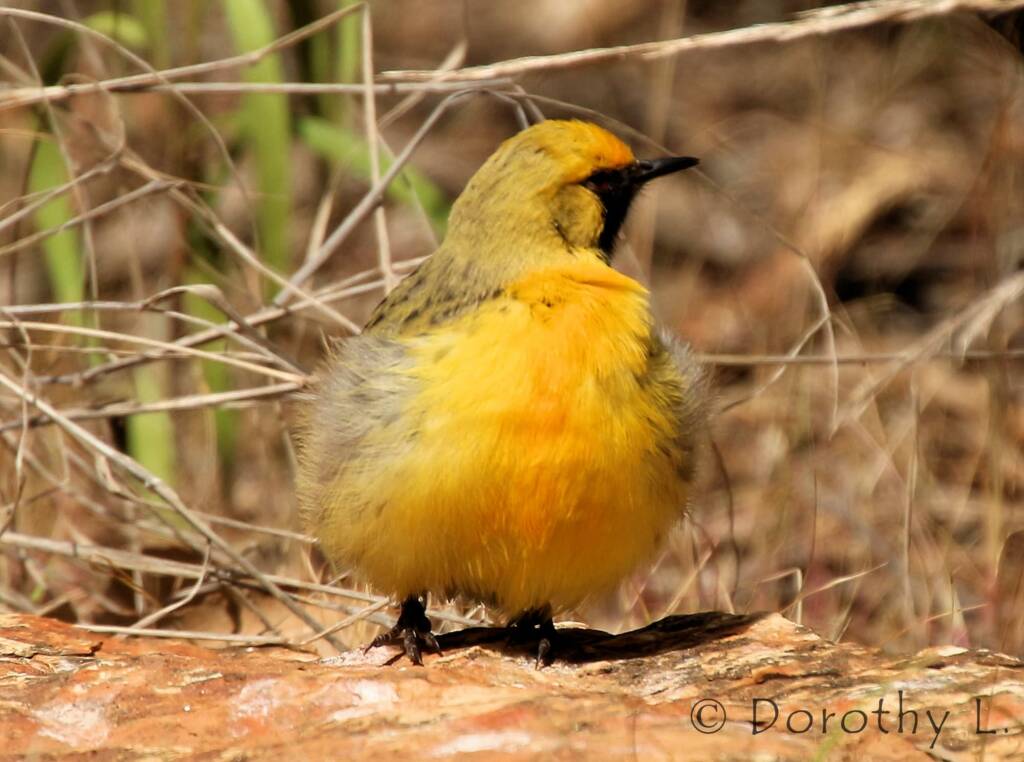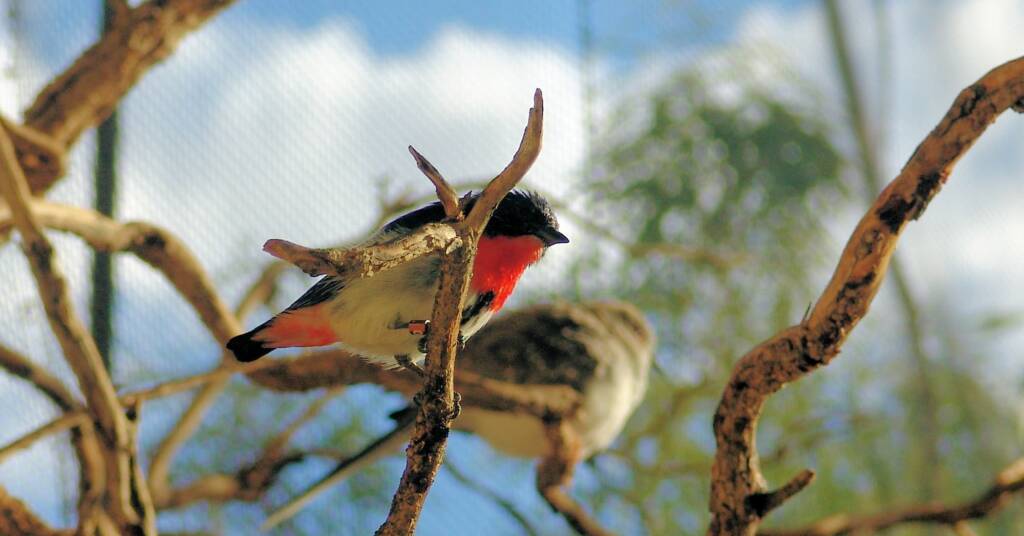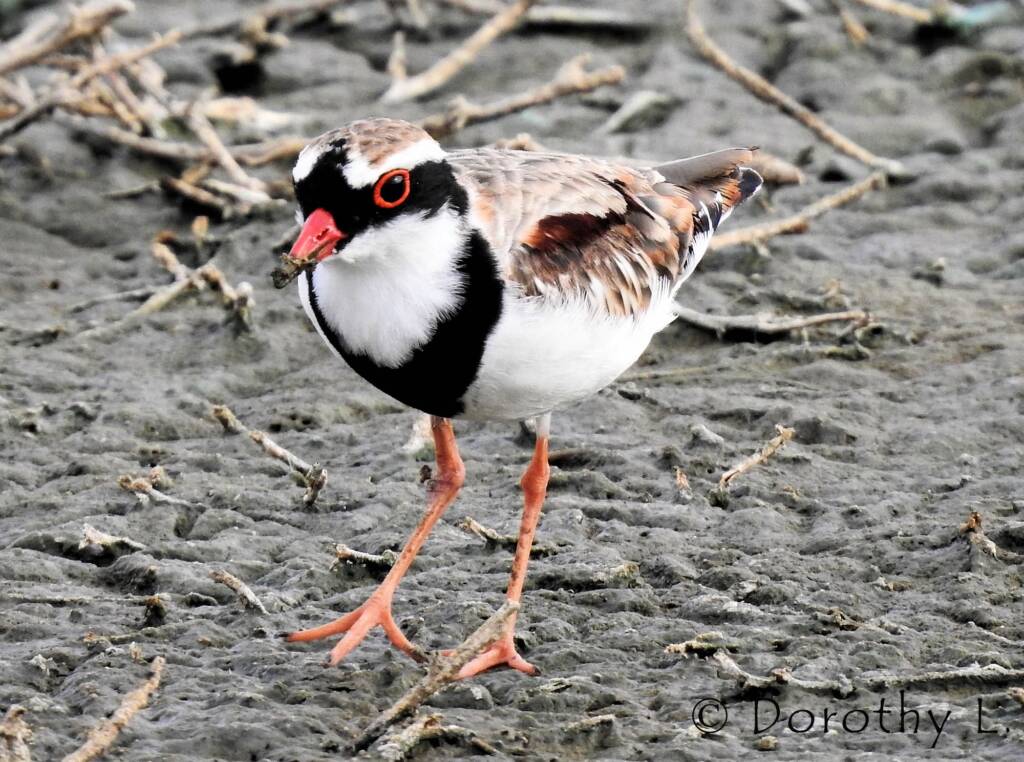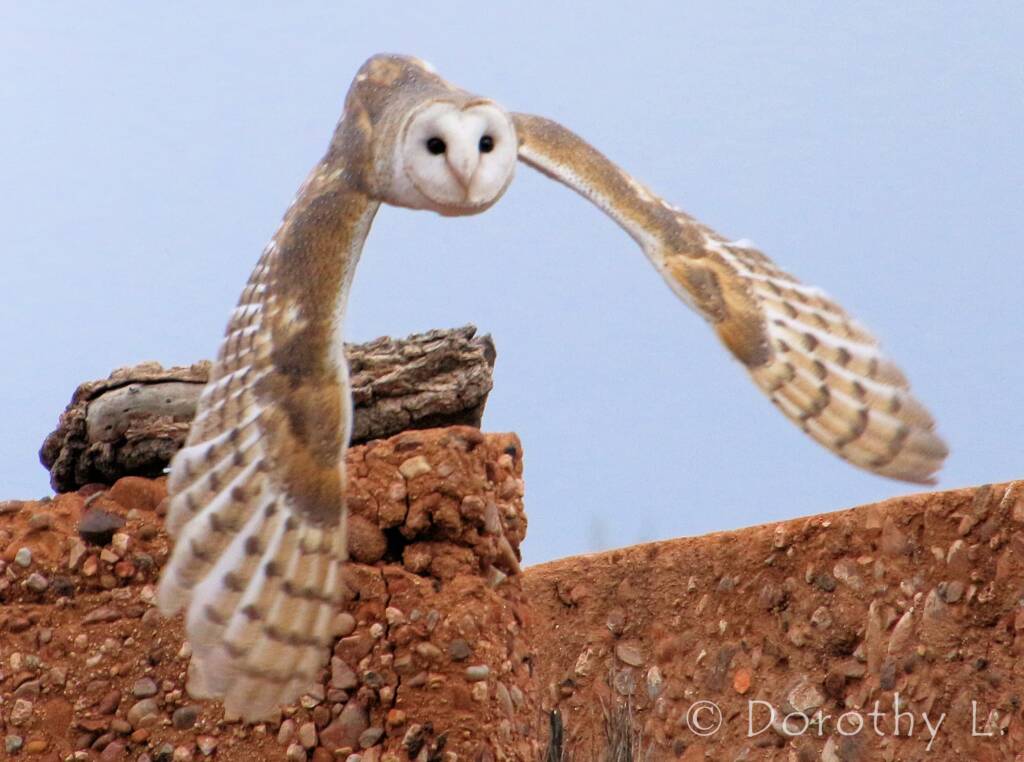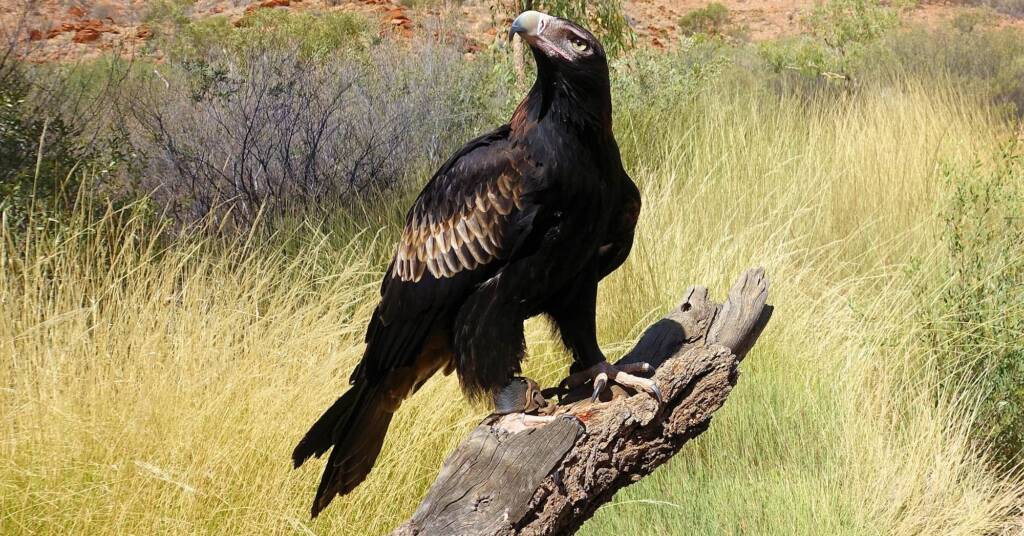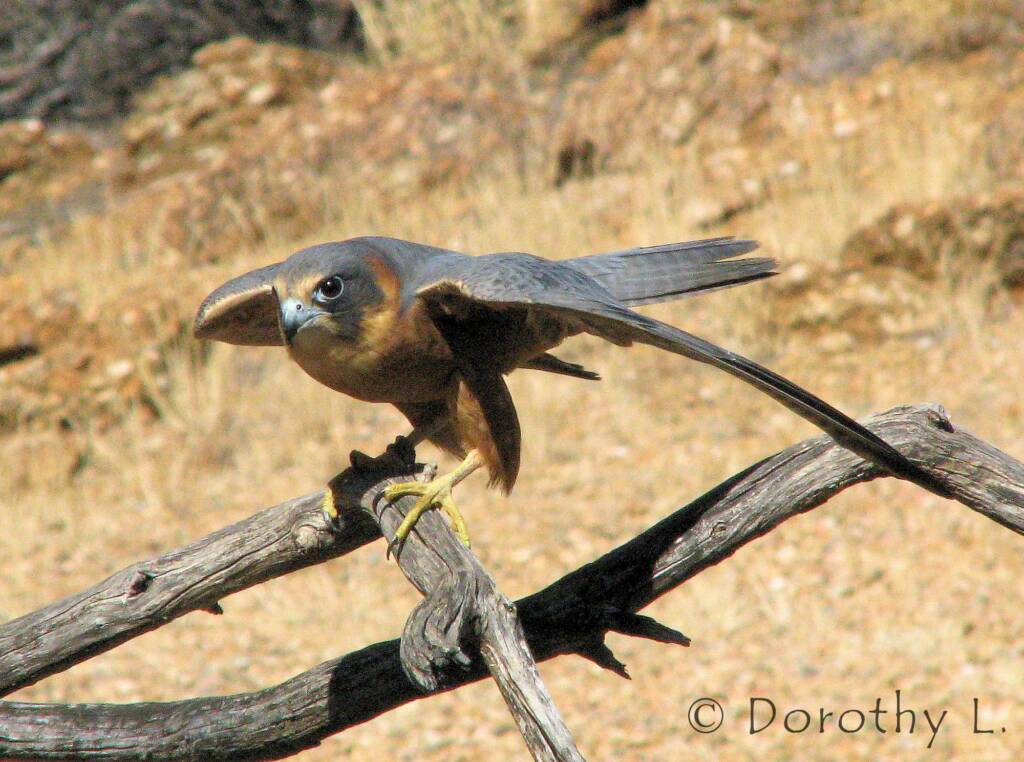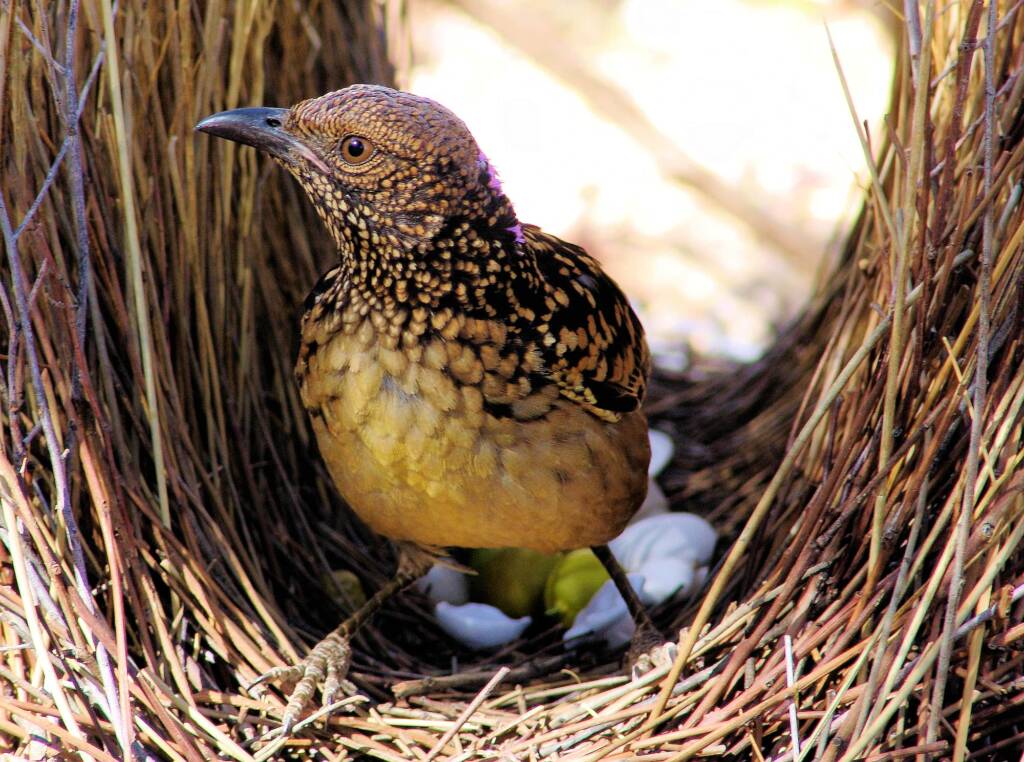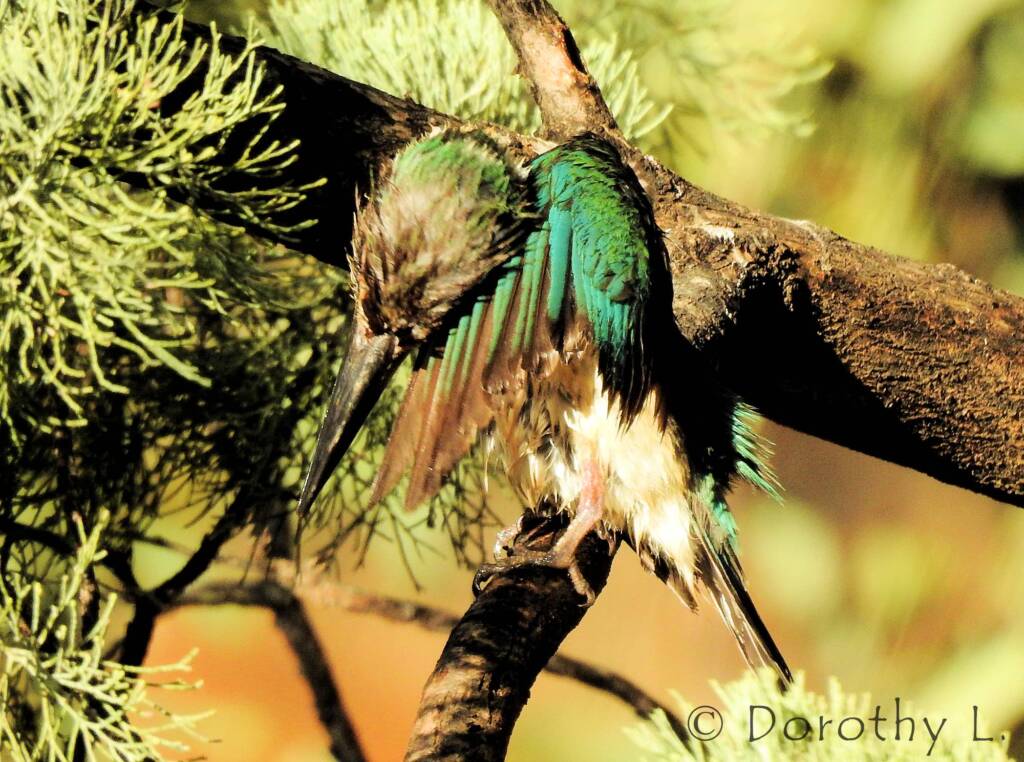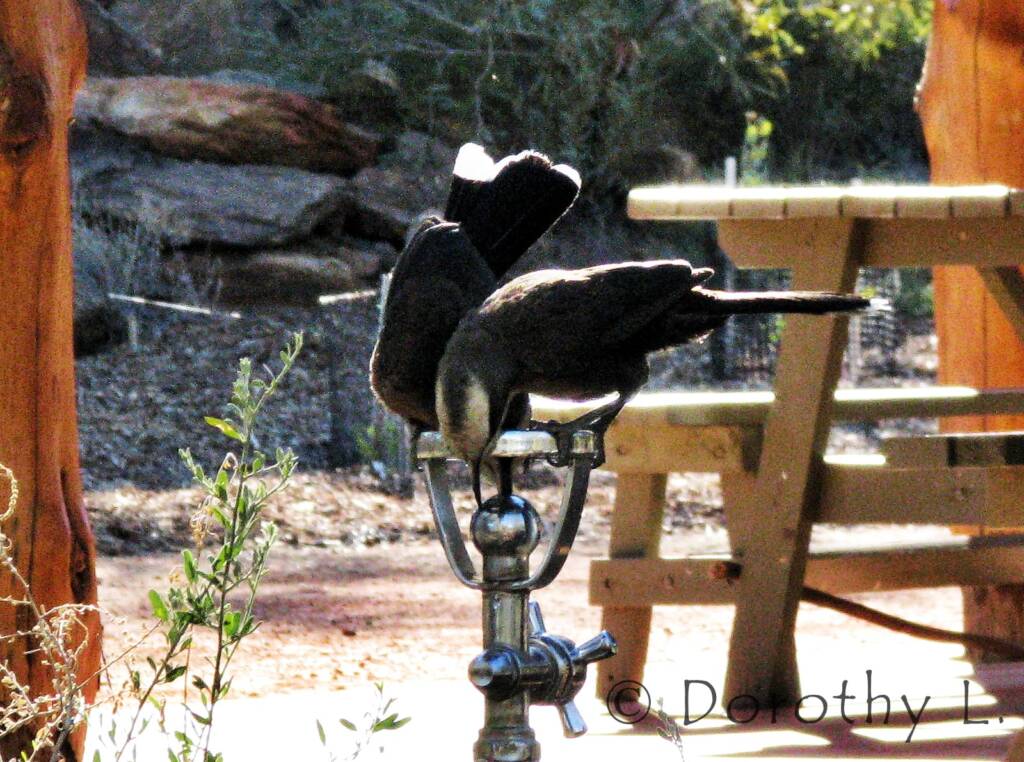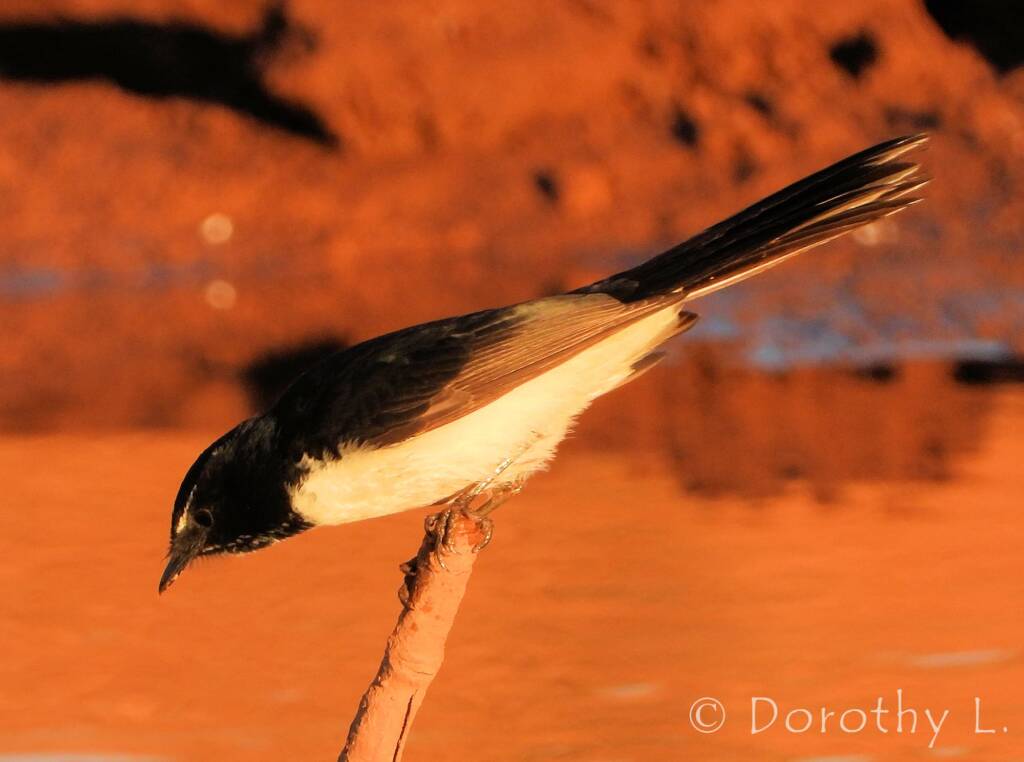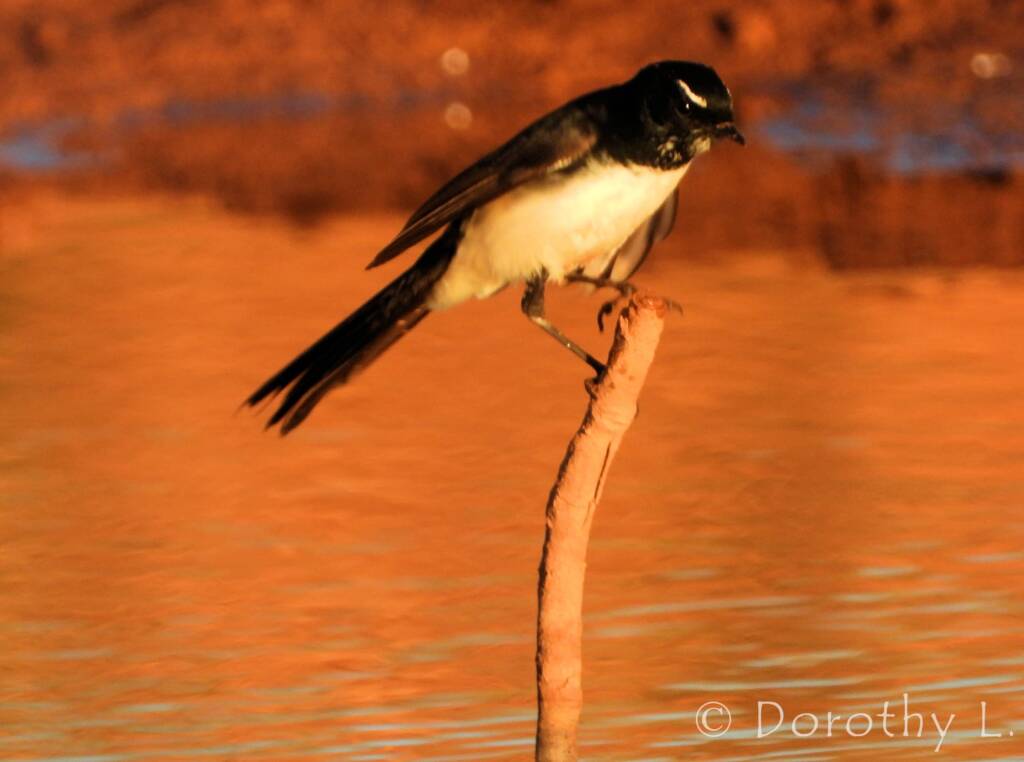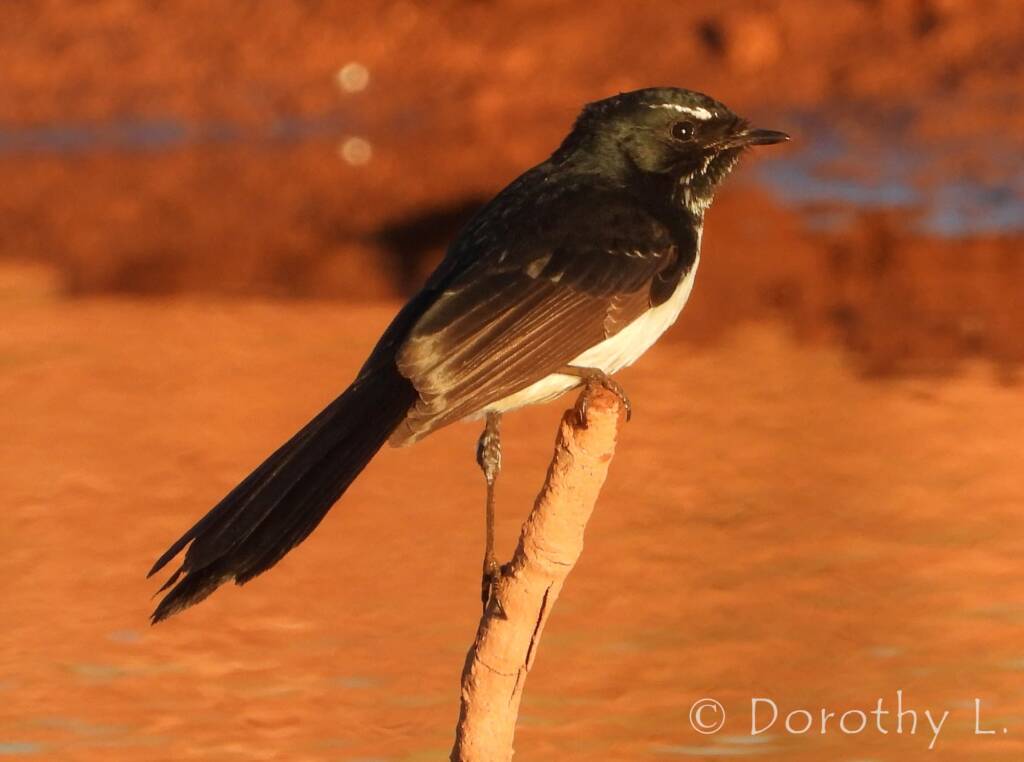One of the key attractions here in Alice Springs and the surrounding region of Central Australia, is Bird Watching. The Red Centre is home to an amazing number of species of bird, including a variety of arid zone species, as well as being the stopover point for many migratory bird species. As a consequence, bird lovers around Australia and the world, make Alice Springs a destination to seek out and enjoy their passion.
Alice Springs Sewage Ponds | Ilparpa Claypans | East MacDonnell Ranges | Jessie Gap | Trephina Gorge | West MacDonnell Ranges | Flynn’s Grave | Simpsons Gap | Cassia Hill | Ormiston Gorge | Binns Track | Santa Teresa Road | Larapinta Trail | Kunoth Bore | Owen Springs Reserve | Alice Springs Telegraph Station | Wigley Waterhole | Alice Springs Desert Park | Olive Pink Botanic Garden
There is a downloadable Red Centre Birding Trails pdf document titled Welcome to the Alice Springs Birding Trail, providing details about where to go and what to see on some of the Alice Springs Trails.
Source: Northern Territory Tourism NT / Northern Territory Government
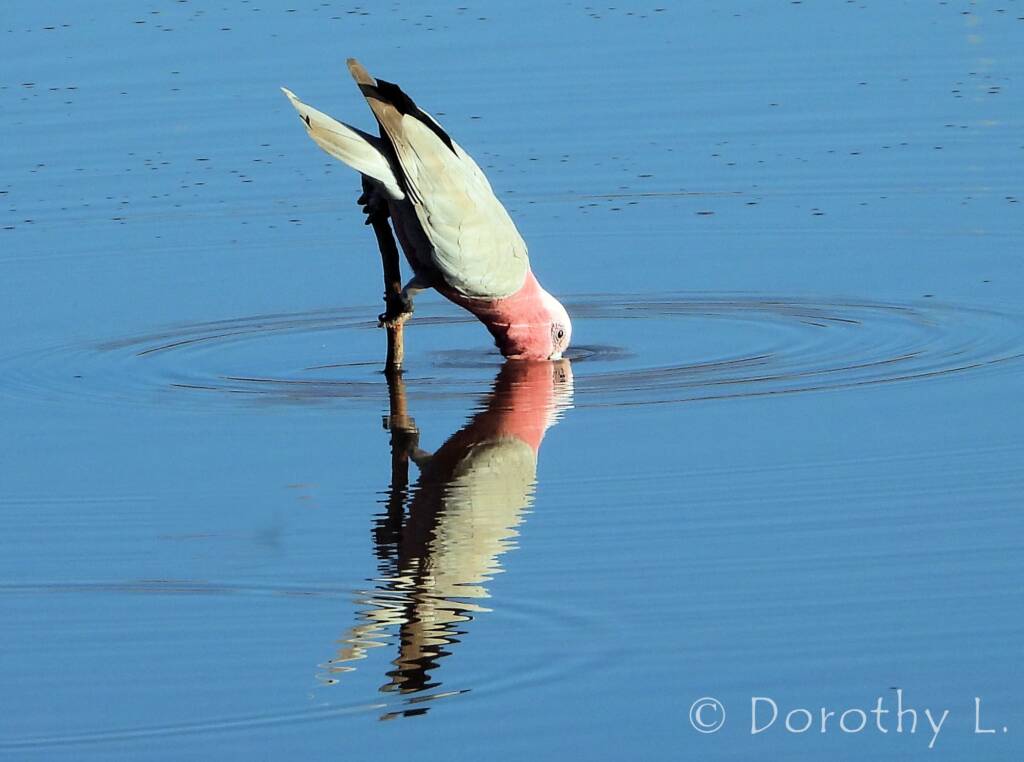
A popular time for bird watchers to visit is from May to September, when nights are cooler and the daylight are relatively warm. This is our winter period, the average temperature ranges from a night-time low of three degrees Celsius to a daytime averaging between 15-20°C. There can of course be occasional night temperatures dropping to zero degrees Celsius.
Whilst the annual average rainfall is around 286 mm, in Central Australia it can vary dramatically from year to year. Spring can sometimes bring thunderstorms, hail and even dust storms. Spring of course is the best season for wildflowers and bird watching with wildflowers peaking in September/October.
There are a few guided tour operators that offer birding tours, as well as many locals who can point out the most likely places to bird watch. There is a great Facebook group called BirdLife Central Australia (although it is a private group). Whilst anyone on Facebook can find the group, only members can see who’s in the group and what they post.
Following slide of birds seen in Central Australia include:
- Black Kite (Milvus migrans), Owen Springs, NT
- Galah (Eolophus roseicapilla), Central Australia, NT
- Brown Falcon (Falco berigora), Owen Springs, NT
- Crimson Chat (Epthianura tricolor), Santa Teresa Rd, NT
- Australasian Pipit (Anthus novaeseelandiae), Santa Teresa Rd, NT
- Willie Wagtail (Rhipidura leucophrys), Santa Teresa Rd, NT
- Male Brown Songlark (Cincloramphus cruralis), Santa Teresa Rd, NT
Our website includes information and photographs of birds seen here in Alice Springs and the surrounding Central Australia. Whilst these photographs may depict different species that were seen here, remember that these photos were taken over many years and at specific times of the year, and represent an accumulation of observations. Some photos may show birds that are not normally seen in this region, but for whatever reason some lucky bird watchers have sighted them here in the region. Other recorded observation may be of birds that were seen in a good year, and does not mean you will see them at any other time.
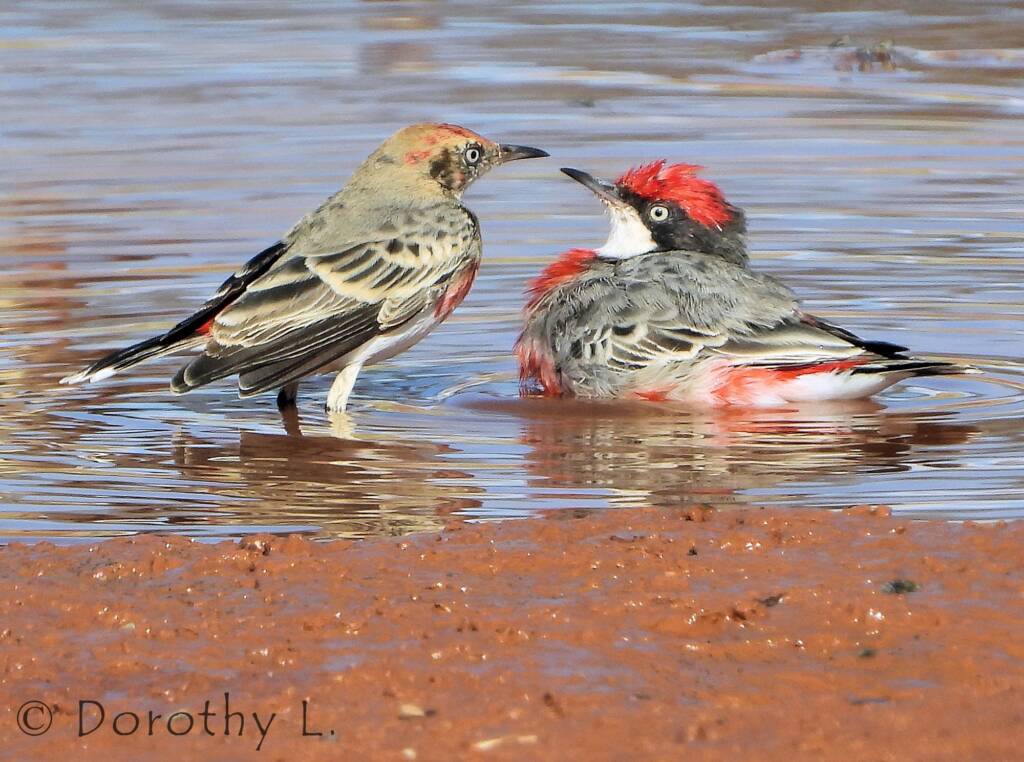
There are a number of locations, known to local bird watchers and those returning for their umpteenth visit. These include:
ALICE SPRINGS SEWAGE PONDS
- Ilparpa Ponds is the Alice Springs Wastewater Treatment Works or the “poo ponds” as the locals call it, is one of the well-known bird watching locations (close to Alice Springs), and being located 4 km south of the CBD.
Over 190 species have been recorded here, including migratory shorebird and other notable rarities. Some of the species include Pink-eared Duck, Freckled Duck, Plumed Whistling Duck, Orange Chat, Australian Painted Snipe, Spotless, Baillon’s, Australian Crake, Red-knee Dotterel, Pied Stilt, Australian Pratincole, Black Swan, Plumed Egret, Chestnut Teal, Purple-backed Fairywren, White-winged Fairy-Wren, Pied Honeyeater, Musk Duck.
Details on how to get access are on the PowerWater website: www.powerwater.com.au/about/community/bird-watching
On the site there is a pdf download with map of the Ponds called Birdwatching in the Alice Springs Waste Stabilisation Ponds, https://www.powerwater.com.au/__data/assets/pdf_file/0007/10123/PWC-Ilparpa-birdwatching-factsheet.pdf
There is an online safety induction video and you need to fill out a form to obtain the key. You will need to plan ahead, as it may take several days for the online form to be processed. Click here to view the link to the Power and Water Corporation online induction.
Check out some of the things that have been sighted at the Alice Springs Sewage Ponds. We hope you enjoy our photos on the various birds, insects, spiders, wildlife and landscape.
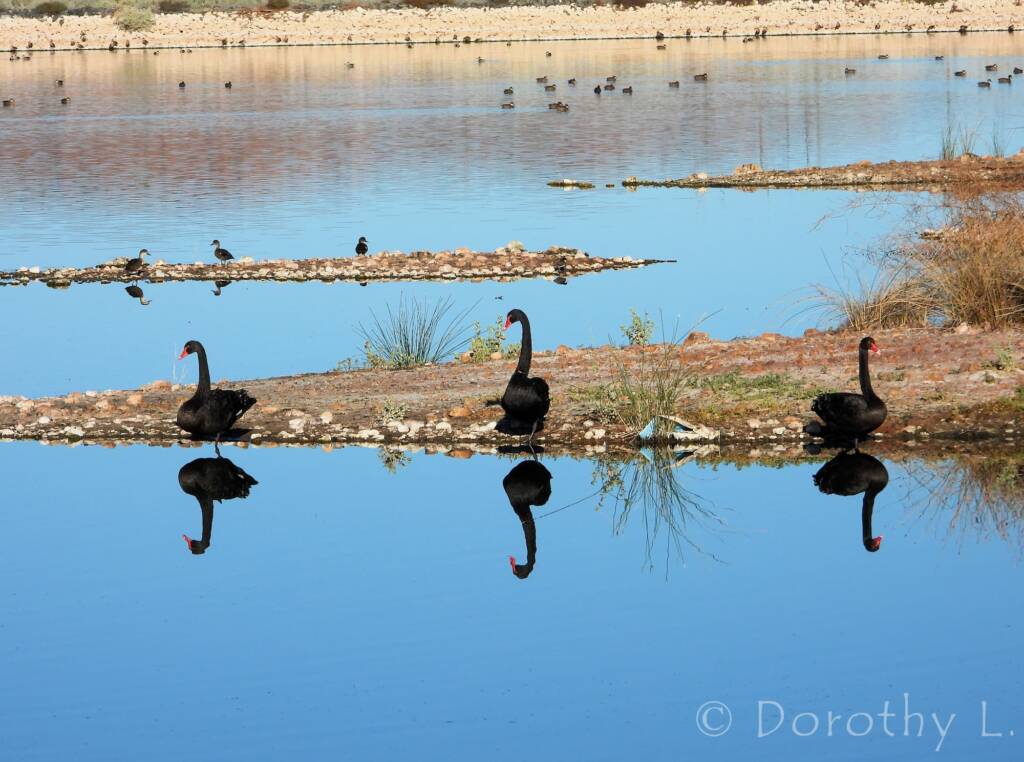
ILPARPA CLAYPANS
- Just south of the West MacDonnell Ranges, approximately 15 km south east of town is the Ilparpa Claypans, one of the lesser known Alice Springs attractions. Located at the western end of the Ilparpa Valley are twelve interconnected ephemeral claypans forming part of the Roe Creek catchment.
This scenic locale is home to a fragile ecosystem and provides a sanctuary for local wildlife including birds. The claypans are listed as a ‘Site of National Botanical Significance’ due to the presence of significant ephemeral plants and a wide diversity of plant species and communities. It is also registered as an Aboriginal Sacred Site, that is an important cultural place, especially for Arrernte Custodians.
Some of the bird species observed here include Black-faced Cuckooshrike, White-browed Woodswallow, White-winged Triller, Yellow-rumped Thornbill, Australian Crake, Whistling Kite, among many others.
EAST MACDONNELL RANGES
- Part of the spectacular MacDonnell Ranges stretching east and west of Alice Springs, the East MacDonnell Ranges provides some amazing outback landscapes of gaps, gorges, Aboriginal art and amazing geological formations. It also provides home to amazing bird life. Many areas have creek beds that attract a variety of birds. Sites popular with bird watchers are Jessie Gap and Trephina Gorge.
JESSIE GAP
- Found within Emily and Jessie Gap Conservation Reserve about 15 km east of town, Jessie Gap is the easternmost of the two gaps. The bowers of the Western Bowerbird have been recorded at the site. During times when it rains and water appears in the gap, various species have been sighted here including Painted Finch, Diamond Dove, Dusky Grasswren, Black-chinned Honeyeater, Striated and Red-browed Pardalote among others.
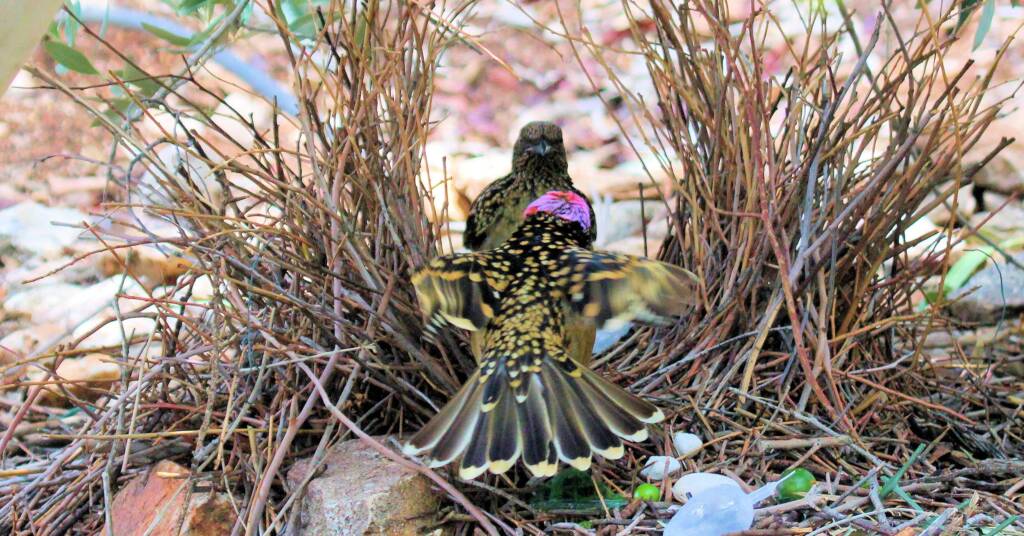
TREPHINA GORGE
- More information coming soon…
WEST MACDONNELL RANGES
- To the west of Alice Springs is the popular West Macs, encompassing the West MacDonnell National Park, and providing important refuges for plants and animals, many of which are found only here, living side by side with relics descended from ancient tropical forests. A popular bird watching location, your journey starts from below Mount Gillen and Flynn’s Grave, before arriving at the popular birding location of Simpsons Gap, then continue on pass numerous gorges and gaps, the Ochre Pits, through to Glen Helen and Ormiston Gorge.
FLYNN’S GRAVE
- Located below Mount Gillen, is this memorial spot to John Flynn’s Grave Historic Reserve. A stile in the fence to the west of the memorial lead to a crown land that is criss-crossed by tracks. Spotted here over the years are various honeyeaters including the Pied, White-fronted, Grey, Grey-headed and Black Honeyeater, Yellow-rumped Thornbill, Budgerigar, Crimson Chat, Dusky Grasswren, Spinifex Pigeon, Western Gerygone, Little Woodswallow. Soaring above in the sky, there have been sighted Wedgetail Eagle, Whistling Kite, Black-shouldered Kite, Black Kite, Kestel, Brown Falcon.

SIMPSONS GAP
- Pictured in the following slide are Grey-headed Honeyeater (Ptilotula keartlandi), Painted Finch (Emblema pictum), Red-backed Kingfisher (Todiramphus pyrrhopygius), Simpsons Gap, NT.
CASSIA HILL
- Located just a couple of kilometres before the main car park at Simpson’s Gap (12 km west of Alice), follow the track as it winds through mulga and senna woodland. Birds recorded at this location include Crested Bellbird, Hooded Robin, Red-capped Robin, Southern Whiteface, Redthroat and the Slaty-backed Thornbill, among others.
ORMISTON GORGE
- Pictured in the following is the White-necked Heron (Ardea pacifica) and Diamond Dove (Geopelia cuneata), Ormiston Gorge, NT.
See our section under destination Ormiston Gorge & Pound.
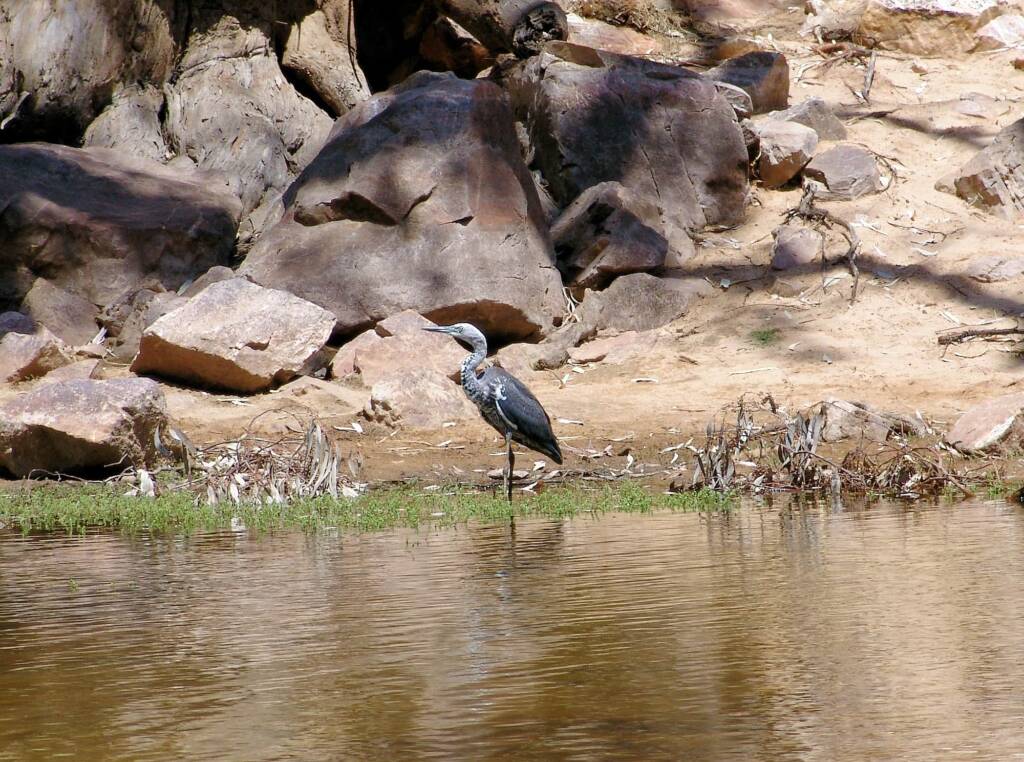
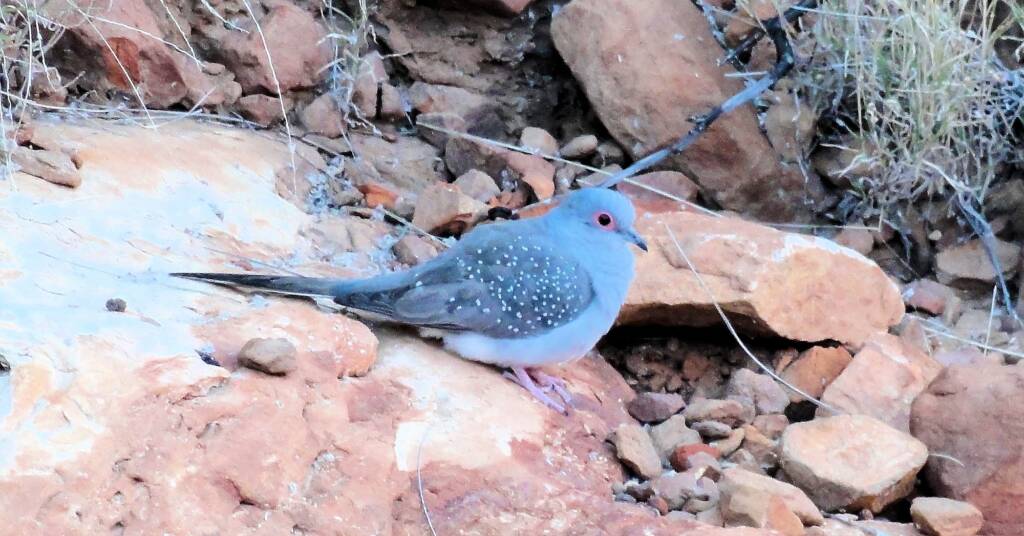
BINNS TRACK
- Check out our section on the Binns Track.
SANTA TERESA ROAD
- The Santa Teresa Road is a popular birding route, that travels through a variety of different habitats. This variety of habitats provides opportunity for seeing a number of different bird species. Travellers and bird watchers can also enjoy the flora and other wildlife that can be seen along this route. The track allows for doing a short excursion or a full day’s trip, with the road joining up with the Binns Track.
Another spot along the stretch of Santa Teresa Road is the “Tyre in Pole site“, approximately 32 km from Alice Springs airport, and is another popular site for a variety of birds including the Dusky Grasswren, Rufous-crowned Emu-wren and the Spinifexbird.
The Santa Teresa Road is a long stretch of road starting from the roundabout at the Alice Springs Airport, starting out as bitumen, then changing into a lengthy dirt road that often has corrugation. Much of the road will likely have ruts and sand piles in the centre and along the edges of the track, so care should be exercised, especially if travelling at speed. Locals living in the region may be travelling at speed, so care should be taken to let them pass.
Before heading out, you should always check for road conditions and restrictions (on the Road Report NT site), especially if there has been recent rains. Other things you should be aware, especially if setting out at dawn, dust and night time, are domestic animals and wildlife, including cattle, wild horses and kangaroos.
Following slide of birds seen in Central Australia include:- Brown Falcon dark morph (Falco berigora), Santa Teresa Rd, Central AustraliaCrimson Chat (Epthianura tricolor) with Zebra Finches (Taeniopygia guttata)Crimson Chat (Epthianura tricolor), Santa Teresa, NT
- Masked Woodswallows, Zebra Finches and Budgerigars, Santa Teresa, NT
- Masked Woodswallow and Budgerigars, Santa Teresa, NT
LARAPINTA TRAIL
- The Larapinta Trail runs from Alice Springs to Mount Sonder, a total of 223 km, that takes the typical bushwalker 16 days to complete. Starting at the Alice Springs Telegraph Station it finishes at Mount Sonder and takes the bush walker through some spectacular and significant habitats, that is home to a range of flora and fauna, including some amazing number of bird species.
KUNOTH BORE
- A bird watching hotspot, this location is about 110 km round trip from Alice Springs. It takes in the Stuart Highway and a section of the Tanami Road, before turning on to the road to Old Hamilton Downs. Care should be taken stopping on the soft sandy edges of the Old Hamilton Downs Road, as it is possible to get bogged.
Pictured in the following slide are: Bourke’s Parrot (Neopsephotus bourkii), Zebra Finch (Taeniopygia guttata) and Black-fronted Dotterel (Elseyornis melanops).
ALICE SPRINGS TELEGRAPH STATION
- The Alice Springs Telegraph Station Historical Reserve is just 3 km north of the town centre and offers an easy access location for bird watching. A walk around the reserve and along the Todd River offers a picturesque spot, with access to amenities and a cafe. Birds sighted here include Grey Honeyeater, Grey Falcon, Western Bowerbird, Slaty-backed Thornbill.
WIGLEY WATERHOLE
- Located on the Alice Springs Telegraph Station Historical Reserve, just a few kilometres north of the Telegraph Station itself, is the Wigley Waterhole, access is by a 4WD track that leaves from the Welcome to Alice Springs sign on the Stuart Highway just north of town.
This location is where the Charles River weaves its way through a series of rock holes and narrow gorges, and often retain water long after rain has passed. It provides a great spot to bird water with a few birds of prey sighted here over the years.
Check out the following map for the Alice Springs Telegraph Station Historical Reserve fact sheet and map
OWEN SPRINGS RESERVE
- Owen Springs Reserve is a popular destination for seeing wildflowers and birdlife
Pictured is the Splendid Fairy-wren (Malurus splendens © Greg Sully), Brown Falcon (Falco berigora) and Juvenile Brown Falcon (Falco berigora © Greg Sully).
Other places that you can see birds include the following:
ALICE SPRINGS DESERT PARK
- The Alice Springs Desert Park has 8 aviaries with large glass viewing screens, 3 are walk-in aviaries, as well as the birds of prey show. The park it self is also frequented and home to wild birds. Locals and other bird watchers have found that the stretch of road from the Larapinta Drive turnoff of into the desert park, all the way to the car park (approximately 1.3 km of road), also offers opportunities for the avid bird watcher.
Check out our images of birds under the Alice Springs Desert Park Fauna section.
Check out our quick-links to some of the birds that you may see at the Alice Springs Desert Park.
Australian Boobook | Australian Bustard | Australian Hobby | Banded Lapwing | Barn Owl | Black-breasted Buzzard | Black-faced Woodswallow | Black-fronted Dotterel | Black Kite | Bourke’s Parrot | Brown Falcon | Emu | Orange Chat | Rainbow Bee-eater | Red-capped Robin | Spinifex Hopping Mouse | Spinifex Pigeon | Splendid Fairy-wren | Tawny Frogmouth | Wedge-tailed Eagle | Western Bowerbird | Whistling Kite | White-faced Heron
OLIVE PINK BOTANIC GARDEN
- The Olive Pink Botanic Garden is a great spot to see different bird species over the year. Besides the Western Bowerbirds (the male bower is signed posted), other birds sighted here include Grey-headed Babbler, Sacred Kingfisher, etc.
There are a number of resources online that cover birding in the region, including joining a tour group, as well as enquiring on the Facebook Birdlife Central Australia group. We list some resources under our Footnote & References below. The Northern Territory Tourism NT have a Bird Checklist pdf that you can download and print out.
Footnote & References
- Bird watching around Alice Springs, Northern Territory Tourism NT | Northern Territory Government, https://northernterritory.com/alice-springs-and-surrounds/see-and-do/nature-and-wildlife/bird-watching
- Chris Watson, Blogs about birds birding birdwatching birders and wildlife in Australia and around the world, https://www.chriswatson.com.au/
- Santa Teresa Road, Alice Springs Field Naturalists Club, http://alicefieldnaturalists.org.au/Santa_Teresa_Road.html
- Birds in the Centre, Alice Springs Field Naturalists Club, http://alicefieldnaturalists.org.au/birds.html
- Birdata, collaboratively and scientifically collect data to gain insight and protect Australia’s birds. Download app to record your bird sightings on the go. Now operating under BirdLife Australia through the Birdata web portal. https://birdata.birdlife.org.au/
- Birds Australia Atlas 2 – Northern Territory, http://birds.rhyme.com.au/
- Guide to Finding Birds Around Alice Springs, Laurie Ross, http://laurieross.com.au/alicesprings/
- Alice Springs – After the Rains, 11 May 2016, Tim Dolby’s Birding Tours, https://timothydolby.com/2016/05/11/alice-springs-after-the-rains/
- Northern Territory – MacDonnell Ranges, Avibase – Bird Checklists of the World, https://avibase.bsc-eoc.org/checklist.jsp?region=AUnoib47
- Bellbird Birding Tours, https://www.bellbirdtours.com/
Alice Springs AttractionsAlice Springs Desert Park Alice Springs Reptile Centre Alice Springs Telegraph Station Historical Reserve Alice Springs Waste Stabilisation Ponds Alice Springs Walks Untyeyetwelye • ANZAC Hill Araluen Cultural Precinct Bird Watching in Alice Springs and Central Australia Central Australian Aviation Museum The Gathering Garden John Flynn’s Grave Historical Reserve Kunoth Bore Olive Pink Botanic Garden Royal Flying Doctor Service
Alice SpringsAlice Springs Accommodation Alice Springs Pet Friendly Accommodation Alice Springs Art & Culture Alice Springs Attractions Alice Springs Directory Alice Springs Distance Alice Springs Festival & Events Alice Springs Flora and Fauna Alice Springs Fauna Alice Springs Flora Getting Around Alice Springs Alice Springs Aboriginal Tours Alice Springs Tours Alice Springs Tours – Other

